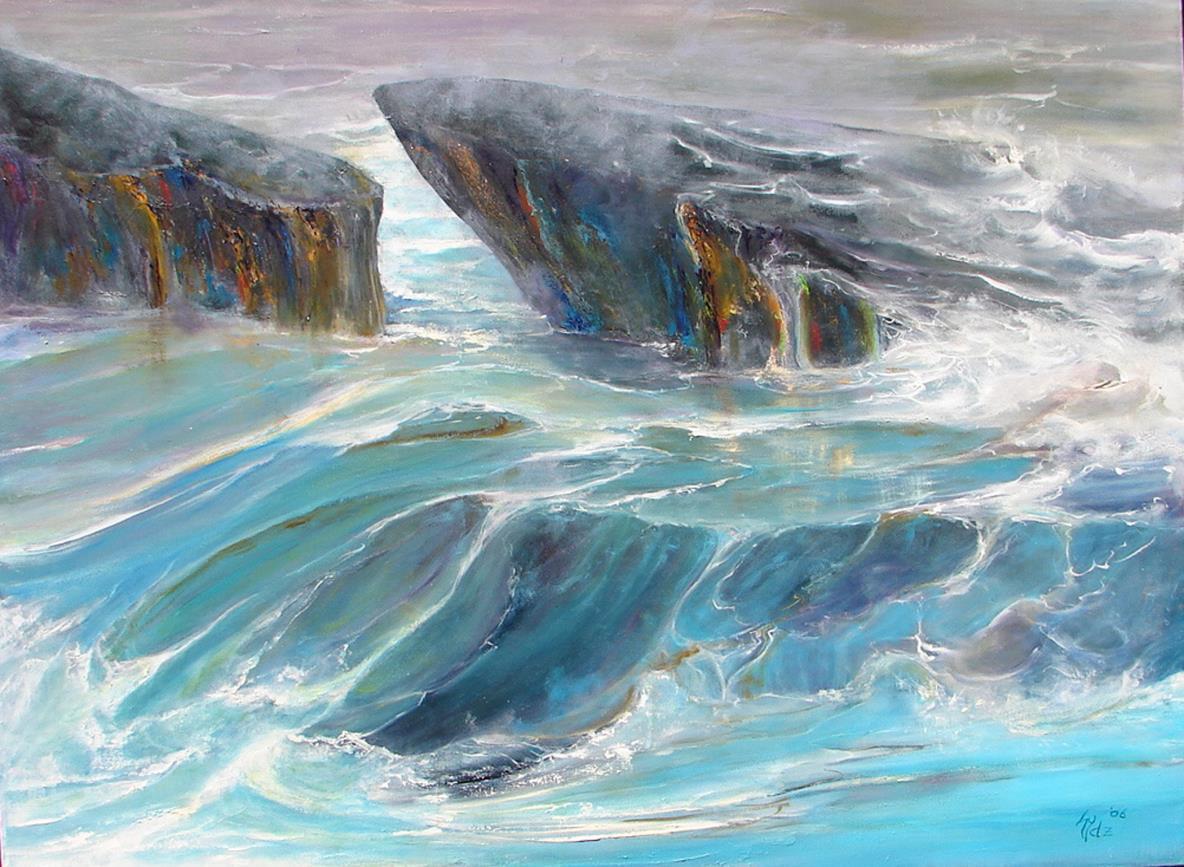




Presented by The Pacific Coast Region Women’s Caucus for Art at SOMArts Cultural Center
934 Brannan Street
San Francisco, CA
June 19 to June 26, 2010
Juried by: Kim Abeles
Eco-art often carries a layered meaning that aids in the understanding and appreciation of the environment, addresses community values, and/or inspires activism on behalf of the ecological systems of which humans and their cultures are a part. For the Blue Planet Exhibition, we seek work that examines and explores the social, political and economic issues related to water. Given that water covers 70% of our "Blue Planet, this exhibition is an opportunity to re-envision, reclaim, remediate and restore our relationships with this most precious resource. All media including installation, video and collaborative projects that fit within the gallery space may be submitted. This show was open to all artists living in California and all national WCA members.
The Pacific Region Women’s Caucus for Art hosted: Elements: An Eco-Art Conference, a visual conversation with artists and other professionals concerned about local and global environmental issues affecting our planet. The conference intent was to stimulate dialogue and contribute to promote eco-art as a global practice. This event was held on June 25, 2010.

The mission of SOMArts Cultural Center is to promote and nurture art on the community level and foster an appreciation of and respect for all cultures. Established as a nonprofit in 1979, SOMArts was born from the passionate activism of the Neighborhood Arts Movement—a trailblazing initiative in San Francisco that demanded art for and by the people, outside the circles of high culture, and supported financially by the city.
In the early years of Neighborhood Arts, the city’s program provided performance space and muchneeded technical support such as sound, lighting and poster printing to arts and cultural groups who did not have access elsewhere.
For more information visit: www.somarts.org

Founded in 1972 in connection with the College Art Association (CAA), WCA is a national member organization unique in its multi-disciplinary, multicultural membership of artists, art historians, students /educators, and museum professionals. The mission of the Women's Caucus for Art is to expand opportunities and recognition for women in the arts.
WCA is committed to education about the contributions of women, opportunities for the exhibition of women's work, publication of women's writing about art, inclusion of women in the history of art, professional equity for all, and respect for all individuals without discrimination and support for legislation relevant to our goals.
For more information visit: www.nationalwca.org
Priscilla Otani – Chair, Northern California WCA
Avinger Nelson – Exhibitions Coordinator, Southern California WCA
Phoeby Ackley – Northern California WCA
Carolyn Applegate – Southern California WCA
Ulla Barr – Southern California WCA
Trudy Chamoff Hauptman - Northern California WCA
Alejandra Chaverri – South Bay Area WCA
Jennifer Colby – Monterey WCA
Marta Donayre – South Bay Area WCA
Karen Gutfreund – Peninsula WCA
Sue Ann Hillyer – Monterey WCA
Niku Kashef – Southern California WCA
Susan Kraft – South Bay Area WCA

Victoria Q. Legg - Northern California WCA
JJ L'Heureux – Southern California WCA
Marion Melchiorre – Southern California WCA
Sandra Mueller – Southern California WCA
Helen Newman - Northern California WCA
Jane Peterman – South Bay Area WCA
Riko Takata - Northern California WCA
Deborah Thomas – Southern California WCA
Irma Velasquez – Northern California WCA
France White – Southern California WCA
Tanya Wilkinson – Northern California WCA
The exhibition is the culmination of a year collaboration between the California chapters of the Women’s Caucus for Art. The mission of the Women's Caucus for Art is to create community through art, education, and social activism. WCA is committed to recognizing the contributions of women in the arts. providing women with leadership opportunities and professional development, expanding networking and exhibition opportunities for women, supporting local, national, and global art activism and advocating for equity in the arts for all.
Kim Abeles has toured the United States and South America and she continues to exhibit internationally. Abeles has received fellowships from J. Paul Getty Trust Fund for the Visual Arts, Pollack-Krasner Foundation, and the California Arts Council. Currently, she is completing artwork for CSC’s Ecosystems (opening this March), and continuing with art about pollution and gender that was exhibited for COP15 in Copenhagen.
Since the mid-80s, Abeles has consistently produced artwork about the environment. In 1987, she invented a method to create images from the smog in the air, and Smog Collectors brought her work to national and international attention. The urban environment, feminism, aging, HIV/AIDS, labor, and collective memory are some of the issues she has engaged. She has created artwork in conjunction with a unique range of collaborators such as the Bureau of Automotive Repair, Santa Monica Bay Restoration Project, California Science Center, Natural History Museum of Los Angeles County, and the Lakota Indians of South Dakota. Abeles created artworks related to water including Run-off Dolphin Suitcase, Thunder of Waters, and Lost Water.
I was honored to jury the exhibition, Blue Planet, sponsored and organized by the Pacific Region Women's Caucus for Art at SOMArts. When I saw the submissions, I was quickly able to understand the daunting task before me, to select work from so many skilled and inventive artists about a topic that is politically both cold and hot. Given the subject, all entries proved to be a visible acknowledgement for the critical meaning of water.
The artworks provided many portrayals about the water on our planet. Some artists presented realistic depictions, symbolic forms or abstractions showing water's pure force, its beauty and mystery. For these artists, we see a reverie for the patterns, flow and spirit of water, including the creatures who live in and out of it. Many of the works are specific to regions of the world, ranging from the chill of Alaska to warmth of India, offering the viewer an understanding of the geography that is embraced through these personal connections. The water-work is linked to memory and travels, childhoods and homelands.
The next category of art documents how we use water, where it comes from, how we transport it, and how we make it a commodity. The ideas include the categorization of samples, locations and use. This is edgy because it enters the political realm more obviously; though all images of water must be observed as political. Many of the works merge art with other disciplines, allowing us as viewers to see urgent facts and data. An existential humor has seeped through some of this art, reminding me of a leak in the dam, desperately stopped by a child's small finger. Many of these works identify our role in the scenario of lost water. We struggle with the control and lack of control for this commodity; we call it a "precious resource", though different parts of the world understand (and observe) this idea more than others.
The last category of work in Blue Planet materializes the mess we have created and the mess we are in. For this exhibition, I made a point to avoid artworks that portray a dismal future. We have plenty of current, horrific issues related to water, and this is shown in the work submitted for the exhibition. Frankly, we must work together with a feeling of positive goal and attitude if we have a chance to heal this disaster. Artists are already playing important roles in this collaboration with scientists, sociologists and members of additional fields who are eager to re-calibrate our efforts and behaviors.
As a kid growing up in the 1950s, I never would have dreamed that water would be sold by the bottle. And, at that same time, I was never taught the politics of water that existed all along. An understanding of our time is slow to materialize. I do believe that human ingenuity is endless in a magical kind of way, and the past ignorance or avoidance-of-knowledge can change to a new movement toward equality for all, among all that are living on the planet.
Kim AbelesI seek the outdoors and a feeling of connection to Nature as much as possible, but I am still within this urban environment most of the time, which can sometimes feel isolating. I reflect and muse upon all that I experience and see here and seek out the Nature hidden under asphalt, pavement, and planted green lawn.
 Allison Adams
Mixed Media 32" h x 21" w
'Elevation Contours Underwater' is made from a recycled paper bag which I painted an abstract version of a contour map of the San Francisco Bay on, then cut into strips and wove with a warp of fishing line and wire.
Allison Adams
Mixed Media 32" h x 21" w
'Elevation Contours Underwater' is made from a recycled paper bag which I painted an abstract version of a contour map of the San Francisco Bay on, then cut into strips and wove with a warp of fishing line and wire.
“Smelts,” is a prompt for viewers to reflect on the relationship between humankind and nature. The Delta Smelt is a tiny, slender fish that resides exclusively in the Sacramento-San Joaquin Delta, a fertile area that serves as a transition for water originating in northern California, and ends in water delivery west of the Delta for agriculture and south of the Delta for citizens of southern California. In order to deliver the water, there are pumping stations near Tracy that are apparently sucking and pulverizing the Delta smelt leading to a dramatic decrease in population and potential extinction. In 2007 a court order dramatically reduced the delivery of water from the Delta in order to increase freshwater flows in the Sacramento-San Joaquin Delta to protect the tiny fish. The controversial result has been the diversion of billions of gallons of fresh water away from agriculture and population needs.
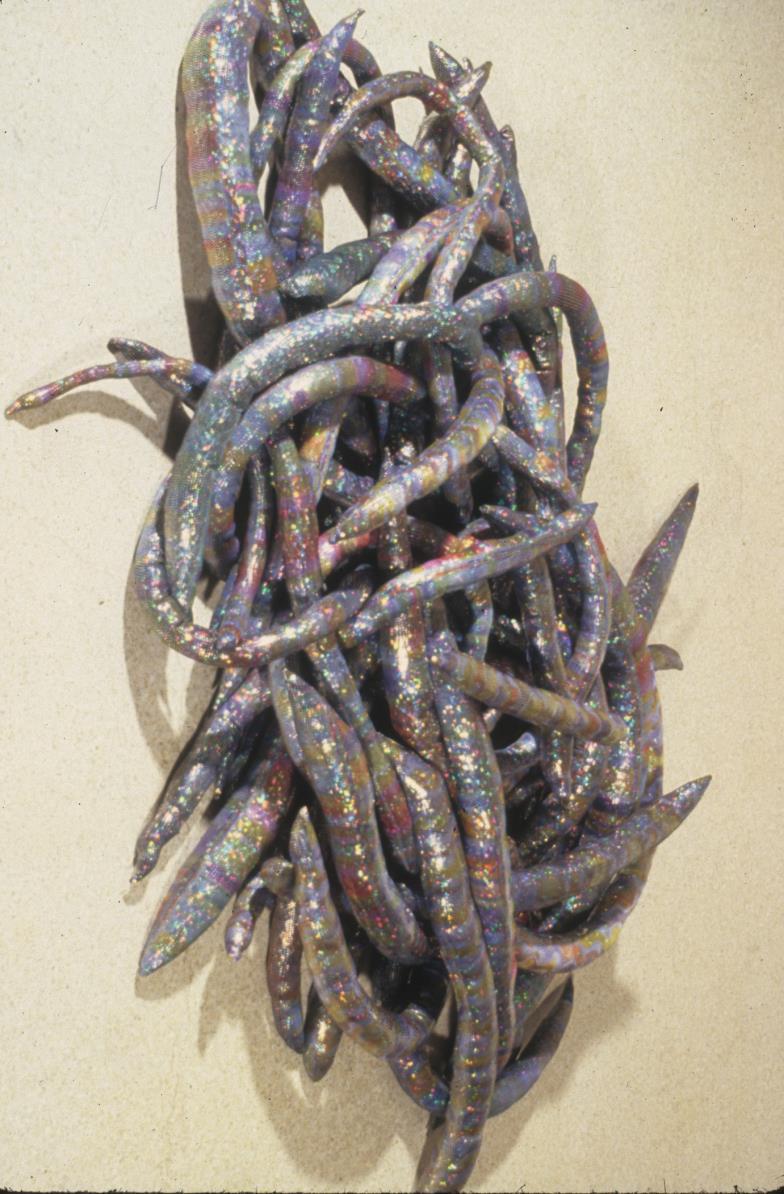 Carolyn Applegate
Fabric, Polyfill and Acrylic 36" h x 42" w x 36" d
Carolyn Applegate
Fabric, Polyfill and Acrylic 36" h x 42" w x 36" d
“Water” is a blessing, source of relief, joy and peace, a very precious element for human and other life on this earth from Mother Nature. The word itself sparked several images in my mind. I walk on the rustic board walk in Emeryville around the Bay every morning. The blue shimmering peaceful water in the early rays of the sun offers strange peace and energy to my mind and body. I feel grateful. But the horror of scarcity of water or the images of beautiful clean water turning into polluted water worries me! I also have images in my mind from Rajasthan India, where I used to watch several village maids bringing their pitchers and containers and wait in line, to fill them from the municipal tap. Here in US we think water is in abundance but how long it will remain in abundance?

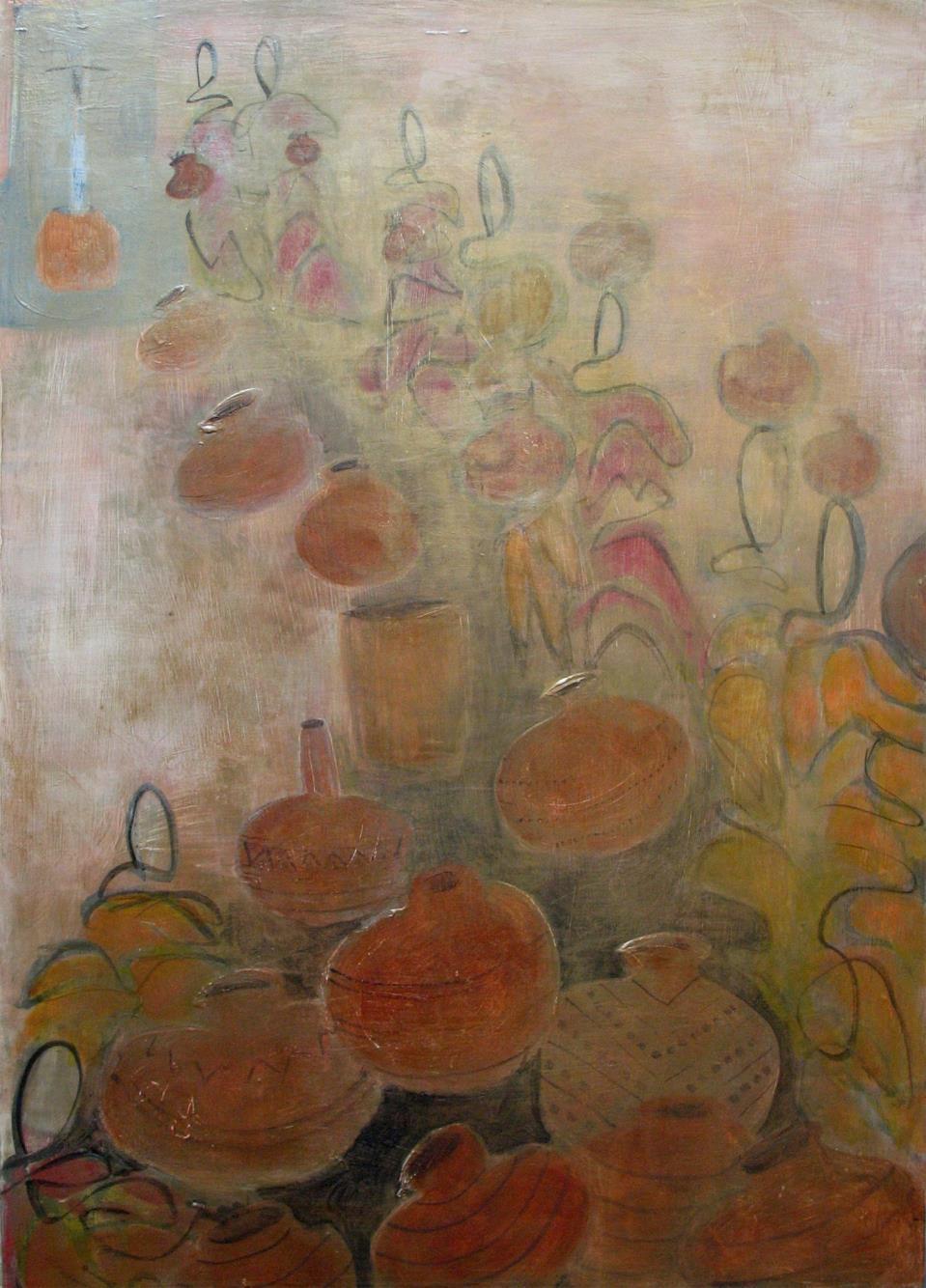
I used to watch this scene as a child from our balcony, early in the morning,when we lived in Ajmer, Rajasthan India. There was this municipal water tap in front of our house and several village maids would bring one or two mud pitchers and keep them in line to get filled!
Thinking about possible water scarcity in world today I was reminded of this vignette from childhood alley!
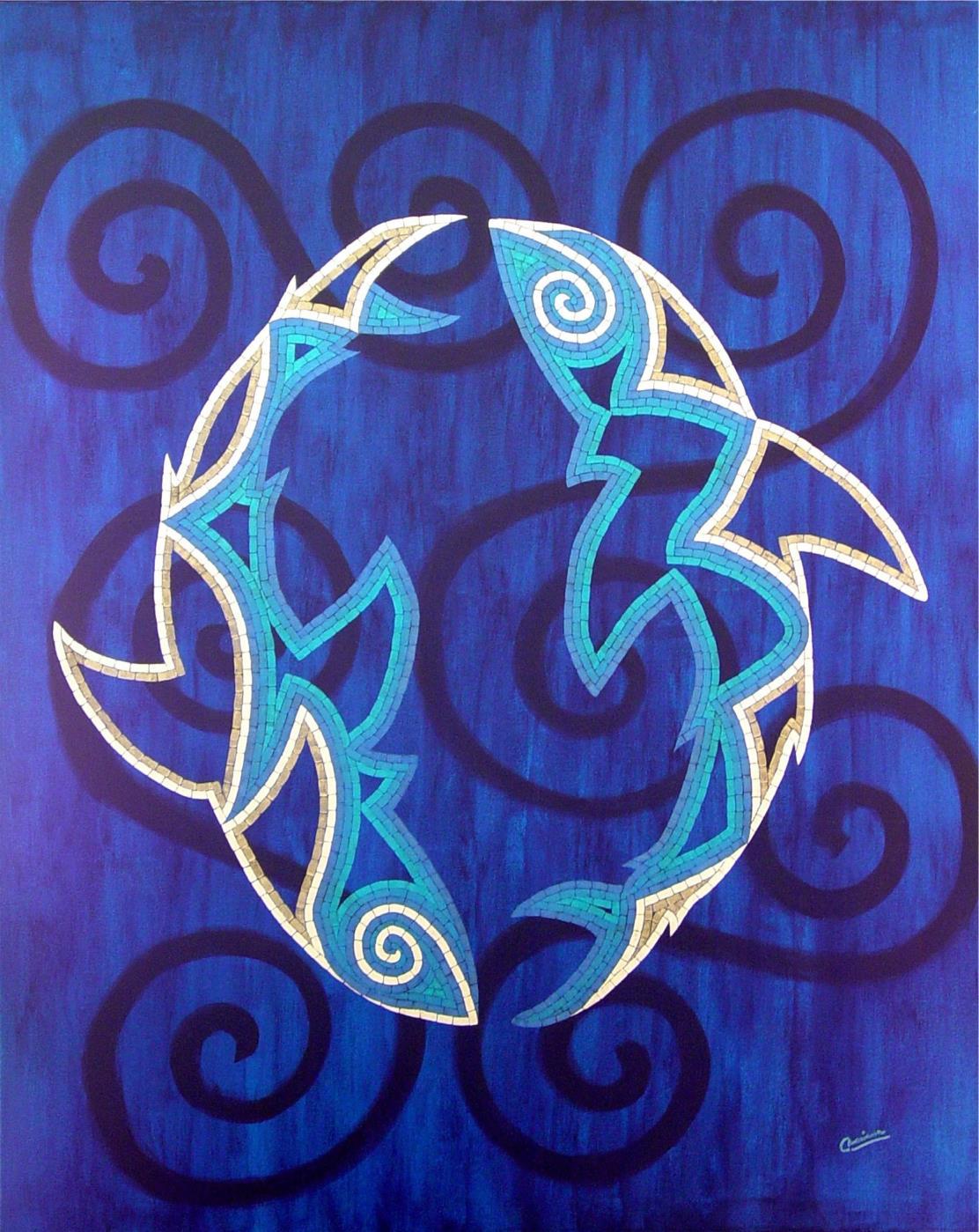 Mariana Barnes
Acrylic on Canvas 60" h x 48" w x 1-1/2" d
Mariana Barnes
Acrylic on Canvas 60" h x 48" w x 1-1/2" d
Water is our most precious resource. We can’t live without it. However, we often live as if that resource will be around for us forever. We pollute it and take it for granted. The oceans are home to innumerable species. These magnificent life forms are threatened by our actions and countless are becoming extinct. What we humans fail to realize is that we are all interconnected; every living thing on Earth affects every other living thing in one way or another. The effect we have on our environment may not be seen at the exact moment we are polluting it, but the cumulative effects are presently experienced and felt by all beings on our planet. My intention is to remind everyone with my art of the beautiful creatures that share our world.
 Mariana Barnes
Snail Shell
Acrylic on Canvas 48" h x 60" w x 1-1/2" d
Mariana Barnes
Snail Shell
Acrylic on Canvas 48" h x 60" w x 1-1/2" d
It happened again! A major sewage pipe ruptured and sent an estimated 500,000 gallons of raw sewage into a creek that empties into the ocean at Doheny State Beach in Dana Point, California. Popular with families with young children, the area includes a state campground and sheltered beaches. The spill made the already polluted beaches even more polluted. Like a river of bacteria, the contaminated water made its way through the sand to the ocean mingling with plastic bottles. The swimmers could see the plastic bottles but had no idea their bare feet waded in raw sewage. No signs warned them as they let their dogs drink the water. I tried to warn them but in vain. Why should I know about something they were not warned about?


Installation
8' x 4' w
The contamination of the world’s oceans with plastic detritus is one of the grimmest realities of our lifetime. What part did we play in creating this problem and how can we stop contributing to the extinction of thousands of animal species, and perhaps even our own? California has been historically, one of the largest producers of food at national and international levels. Plastic containers in every shape and size have been created to ship our products to every corner of the world. We have ignored for too long, the consequences our plastic proliferation has had on other nations. We need to insist on ecologically friendly packaging, and share what we know about recycling, in order to help not just ourselves but also everyone who occupies this planet with us.
Paper Maché + Audio 12"h x 21"w x 11"d With 11 minutes audio
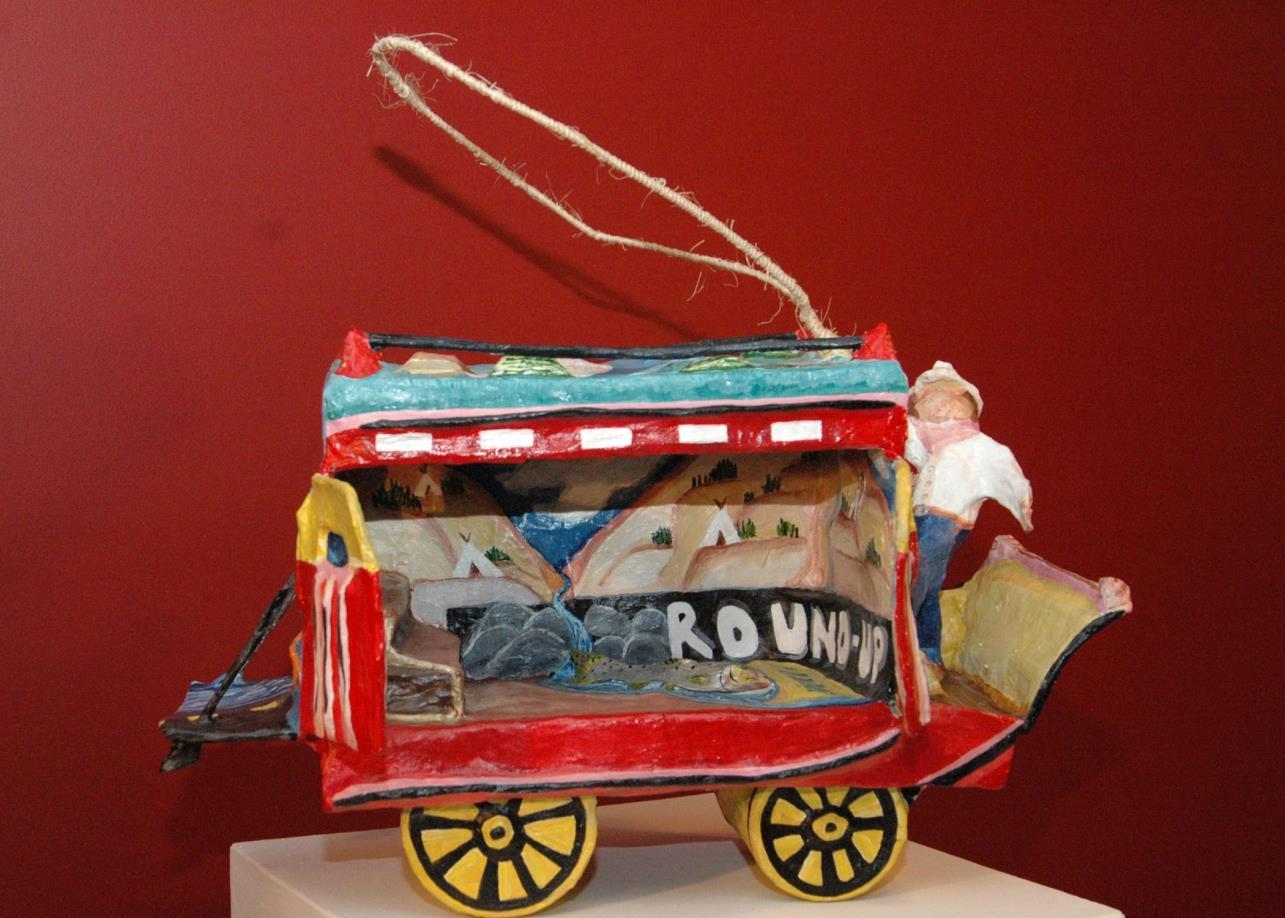
My mother’s mother was a Gypsy who traveled from Bohemia to the West. My mother traveled Oregon’s back roads teaching people to tell stories. My father was a minister who built small trains and ships. I build traveling altars as vehicles for storytelling. I cultivate the sacred through play. I start with a dream. As I sculpt, stories and colors appear. Music rambles through. Chance cracks jokes, and I laugh out loud.
Working with supplies at-hand: shoeboxes, newspapers, flour and water, I build caravans that transport viewers to a different world. Along the way, I tell stories of life and death, memory and dissonance, longing and desire. Here, I explore the impact of the Hanford Nuclear Reservation on the people living “downwind” in eastern Oregon and on the Columbia River salmon.
I invite you to come closer, imagine a story, and stay awhile.
Rebecca BauenMixed Media on Canvas 48" h x 24" w x 2" d
Blue Pathway Jelly's was inspired by the natural environment, the Pacific Ocean. I have lived near and loved the Pacific Ocean for well over four decades. The natural purity of the crisp air, the turquoise blue green color continue to nurture my artistic spirit. The abstract jelly-fish image in this painting echo what lies beneath. I have chosen to paint the blue waters beauty not to deny or overlook the damage of what we human's are doing to the oceans, rivers and lakes but rather to inspire. Hopefully the beauty in a painting well help us not forget that we are sacred caretakers of our Blue Planet. As women we know our relationship with water has changed throughout time and across cultures. As a 21st century women, I fear we may be at a point of no return if we don't act soon. Today a huge floating garbage dump wallows on the Pacific Ocean. Is it too late? I hope not.

Considering the fact that water covers 70% of our Blue Planet, it's amazing that today we buy water in plastic undegradable bottles. Growing up a country girl in northern California in the 1940's we had our own spring well fed by the Sierra Nevada Snow Melt. Our water was free, clear and clean. We had no thought then that women across the world would give their soul for a cup of water. Today this still stands as true, except that we now know of our sisters plight around the world. The water flowing in and out that shapes women's lives most be free and clean for them and their children today. As a artist I try to address through my paintings my concern for our beautiful home, earth, and its life giving waters. In my abstract painting "IN DEEP" it was a challenge to represent the mirrored surface of very deep waters, the process of blurring and magnifying the image. This process became awesome in scope for me. Being a female artist in this time and place in the world is both rewarding and challenging. To nurture my spirit and keep my voice strong is ongoing. For this artist painting has become an ally, and a voice to the world.
 Mixed Media on Canvas 48" h x 24" w x 2" d
Mixed Media on Canvas 48" h x 24" w x 2" d
“Exit falls” is part of a series of paintings that explores the impact of accelerated glacier melt in the sub-arctic ecosystem of Prince William Sound, Alaska. I was interested in the power of the falling glacier water as well as its fineness and purity. I use specificity in observation to speak of this stage in the ice-melt cycle, but also pare away detail to open the way for a sense of time, movement and emotional connection. I am interested in nature's contradictory delicacy and power, the phases of existence and the various ways the promise of life is fulfilled. I look for resonance between the cycles and elements of nature and the human experience in order to bring the viewer into a closer connection and identification with nature.
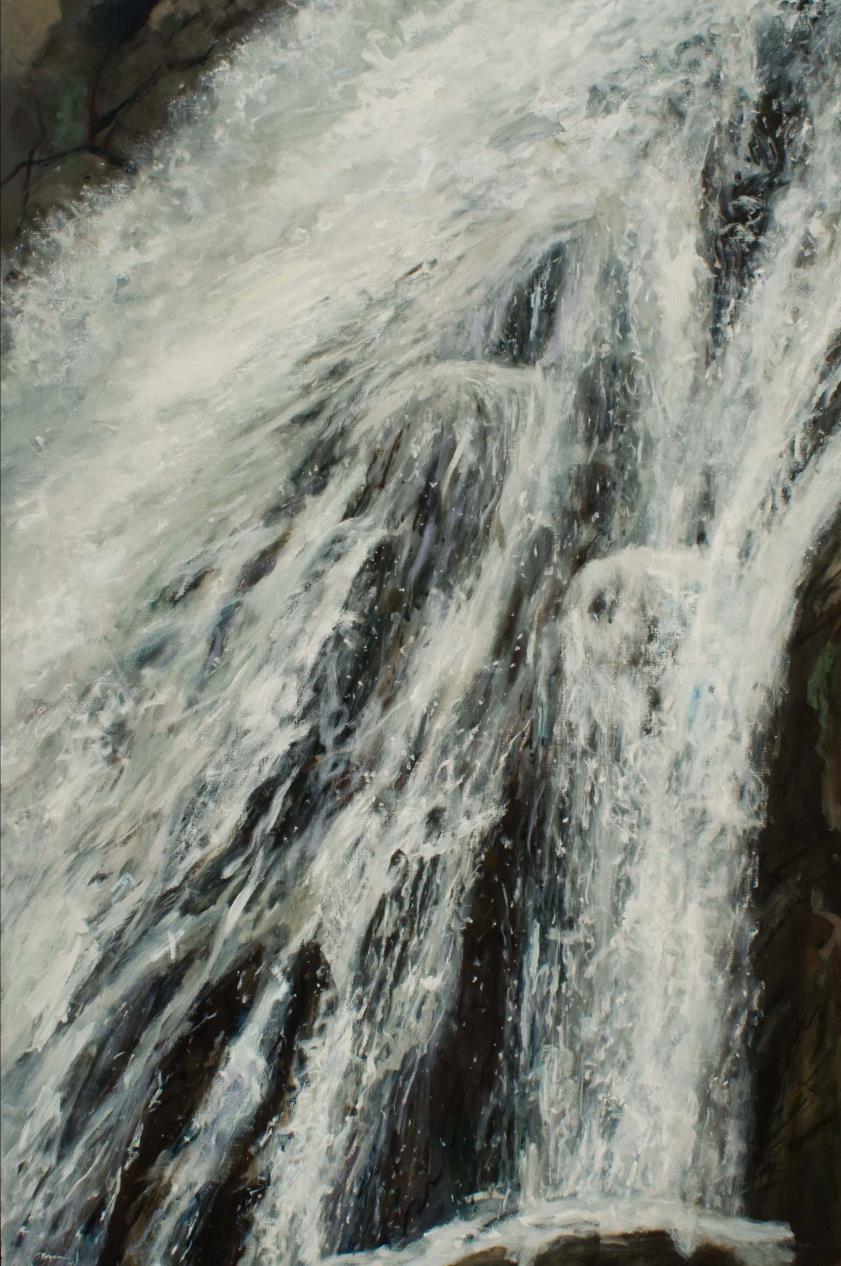 Oil on Canvas 75" h x 50"w x 2"d
Oil on Canvas 75" h x 50"w x 2"d
“Iceberg four” was created through an artist residency in Alaska through the National Park Service. It is part of a series of paintings that explores the glacier ice melt in Prince William Sound. With the alarming accelerated melt-rate of the glacier ice, it is my goal to give the viewer a way to enter into this world of frozen water, to consider its beauty, to witness its reality, to appreciate its power, to feel its delicacy and remember its threatened state.
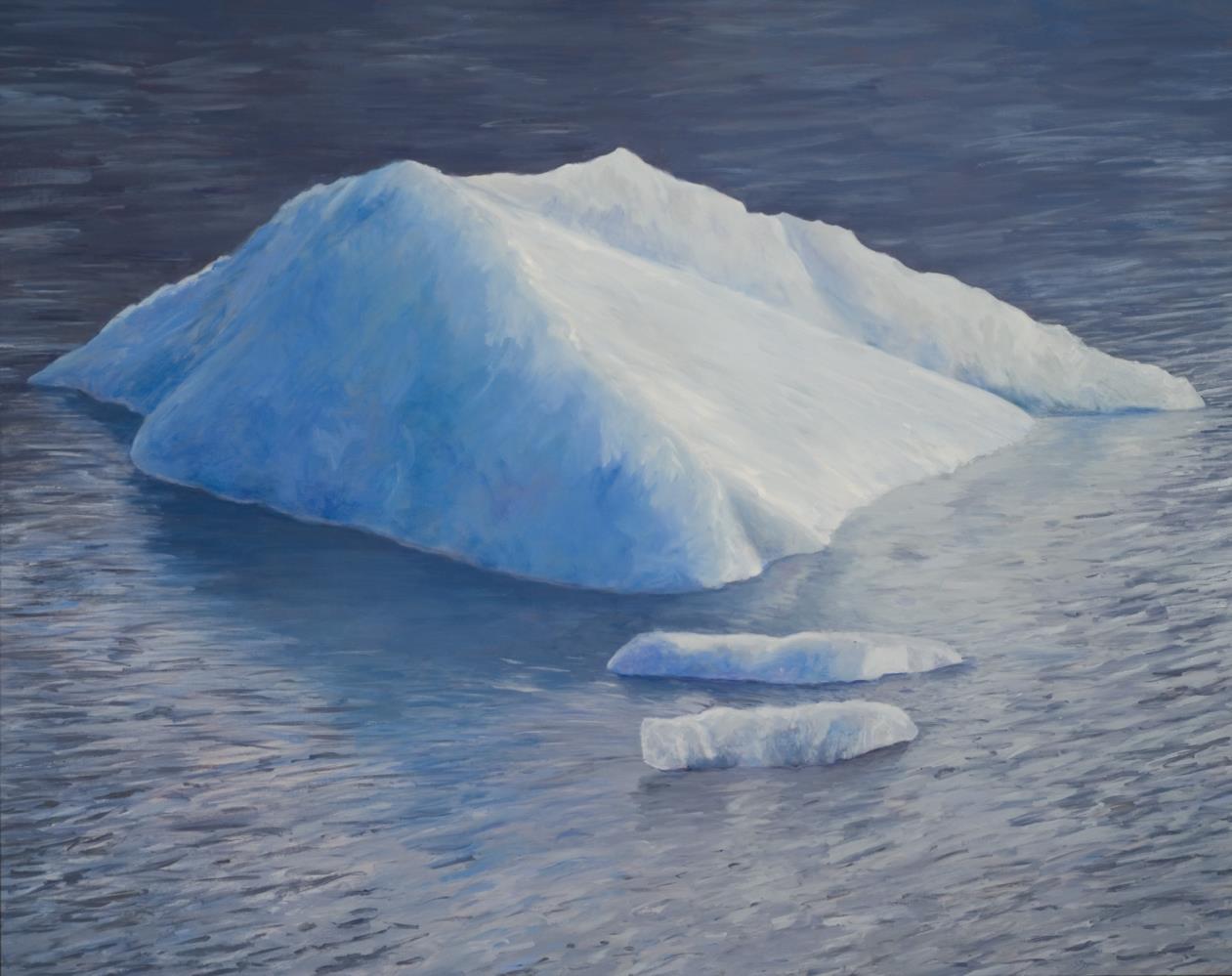 Oil on Canvas 62" h x 78" w x 2" d
Oil on Canvas 62" h x 78" w x 2" d
We are living an aftermath. We have experienced a ‘shopocalypse’ – a global consumerism ethos run amok. This image reflects that not only is the economy in ruins; our planet is drowning in pollution. As individuals, we abandoned much of our humanity, our shallow ambitions have been exposed and our souls emptied. It speaks to abandoned humanity. Soullessness. We are adrift.
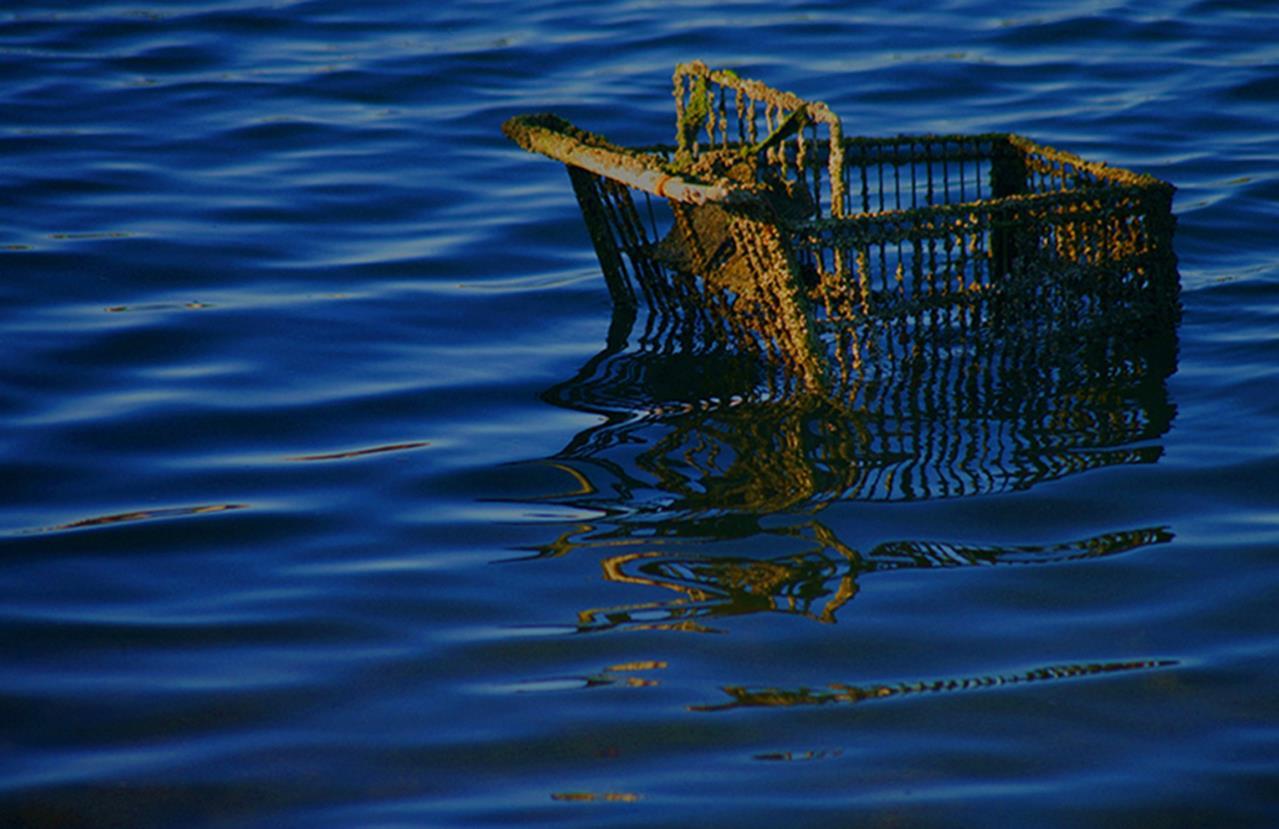
This ‘pretty’ fly-over image of the South San Francisco Bay salt flats must be viewed in conjunction with the ‘not-so-pretty’ ongoing debate regarding the future of commercial development vs. restoration of these wetlands.

Commenting on the lack of wildlife on these waterfront properties, the potential developer cavalierly points out “it’s devoid of any natural habitat because of the high-saline environment that is here, any bird who tried to land here would get his fanny burned.” Instead, the vivid red and orange pools in this image support the imagination of a developer’s ass burning.
This precious, remaining open space deserves extra protection.
Is there an appetite for the significant restoration expenses in the South Bay?
We must be hungry!
Stop Motion Photo Movie 1 minute (no audio)
In “Darkness and Light”, time is transported and carried by the flow that comes together at a delta like the cycle of trickling water repeating itself over and over and yet never in the exact same formation, splashing into a pool and setting waves into repercussion, each with their own qualities. Water, like light, is an agent. It can be smooth as glass and violent as a tsunami. Water can blend, dilute, carry, reflect and absorb messages. A force of life and one that wields the ability to erode, flood and shatter, it is also a primal mixing medium. Time, like water, can be experienced but not held. The accumulation of time and light (both formed by waves) is written into the structure of the photographic image.
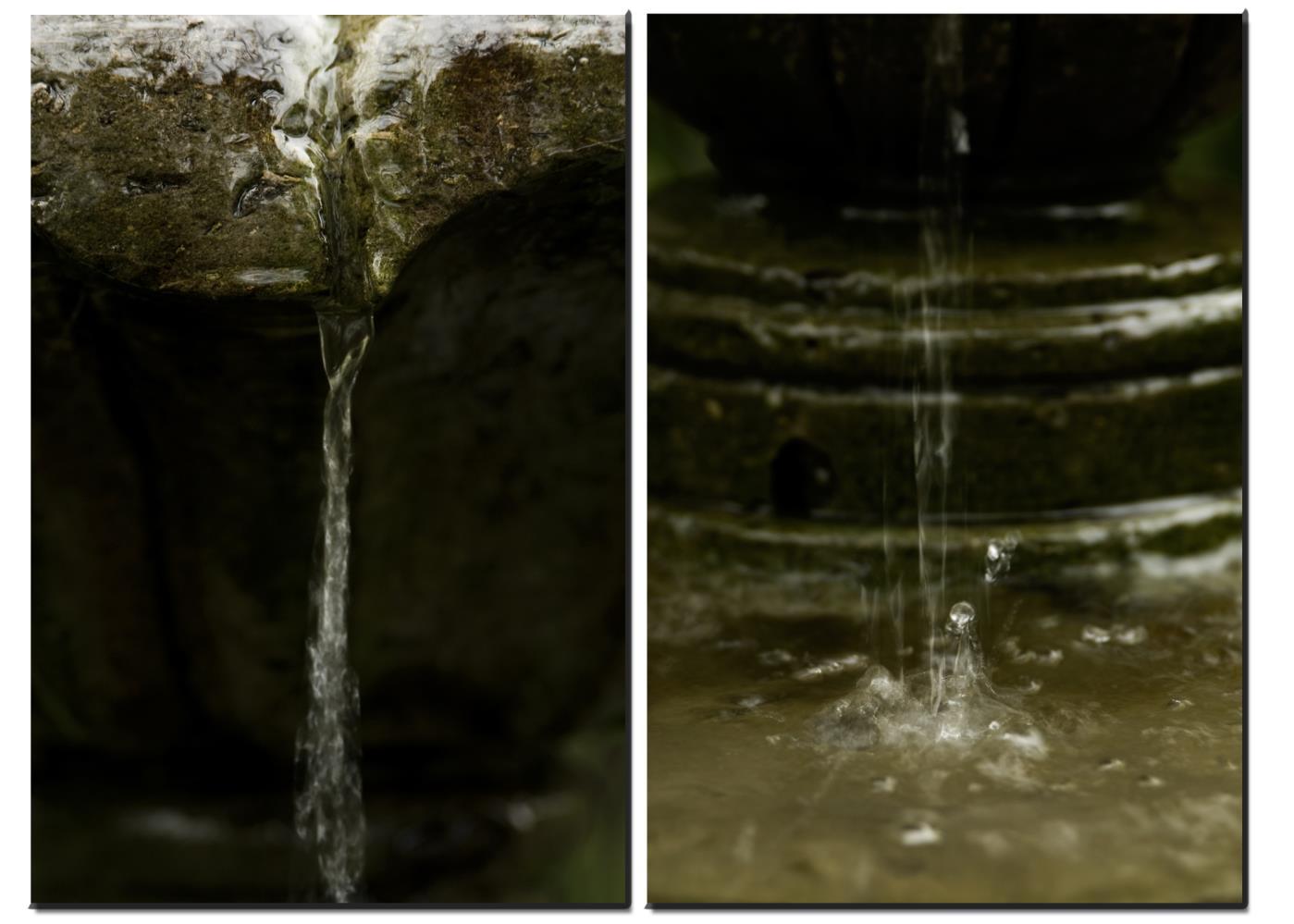
In “Surface Depth” waves of water and reflections are examined calling the viewer into both depth and surface observation. I question how our perspectives can be both individual and collective as well as how much we profoundly don't yet understand about this life force. “Surface Depth” represents a concern with penetration from one realm into another –below or beneath the conscious. I examine the tension in degrees of penetration – focus on the base of reality (the bottom of a pool of water) is difficult to maintain simultaneously with the attention to surface detail – both of which are changing at different rates. The only movement in this photo movie is created by the reflected light, waves of water and racked focus adjustments. It is often shown projected upon and through a transparent structure, which acts as yet another surface.
 Stop Motion Photo Movie 2:30 minute (audio)
Stop Motion Photo Movie 2:30 minute (audio)
I created this art work to bring awareness to all about the need to protect the earths’ waters. Gaia is another word for our home, the planet earth. She is covered by 70% water. We her children have about 60% body/water content. A shield of ‘Caring’ is needed now more than ever to protect our Blue Planet.
 Linda Carlson
Gaia’s Shield
Assemblage/Wall 32” h x 19” w x 6” d
Linda Carlson
Gaia’s Shield
Assemblage/Wall 32” h x 19” w x 6” d

16" h x 20" w (framed)
This series of digitally-manipulated photographs was inspired by the drought that recently affected most of California (and which, though it has eased somewhat, remains a recurring issue for this state and the world). It may seem that these photos focus a lot on the fragility of life, but actually I see strength and vitality all around me: bold colors; ebullience in the way light reflects off different surfaces; balance and tension between different materials. I believe that, if the small things that our world is built upon are strong, then the world itself must be strong as well and that, in turn, gives me strength. The more scarce water is the more valuable it becomes. I was photographing water dripping from leaves after a rain and thinking how beautiful it was and to let others see what I was seeing I replaced three of the drops with diamonds, to suggest to the viewer that water is not only as beautiful, but as precious as well.
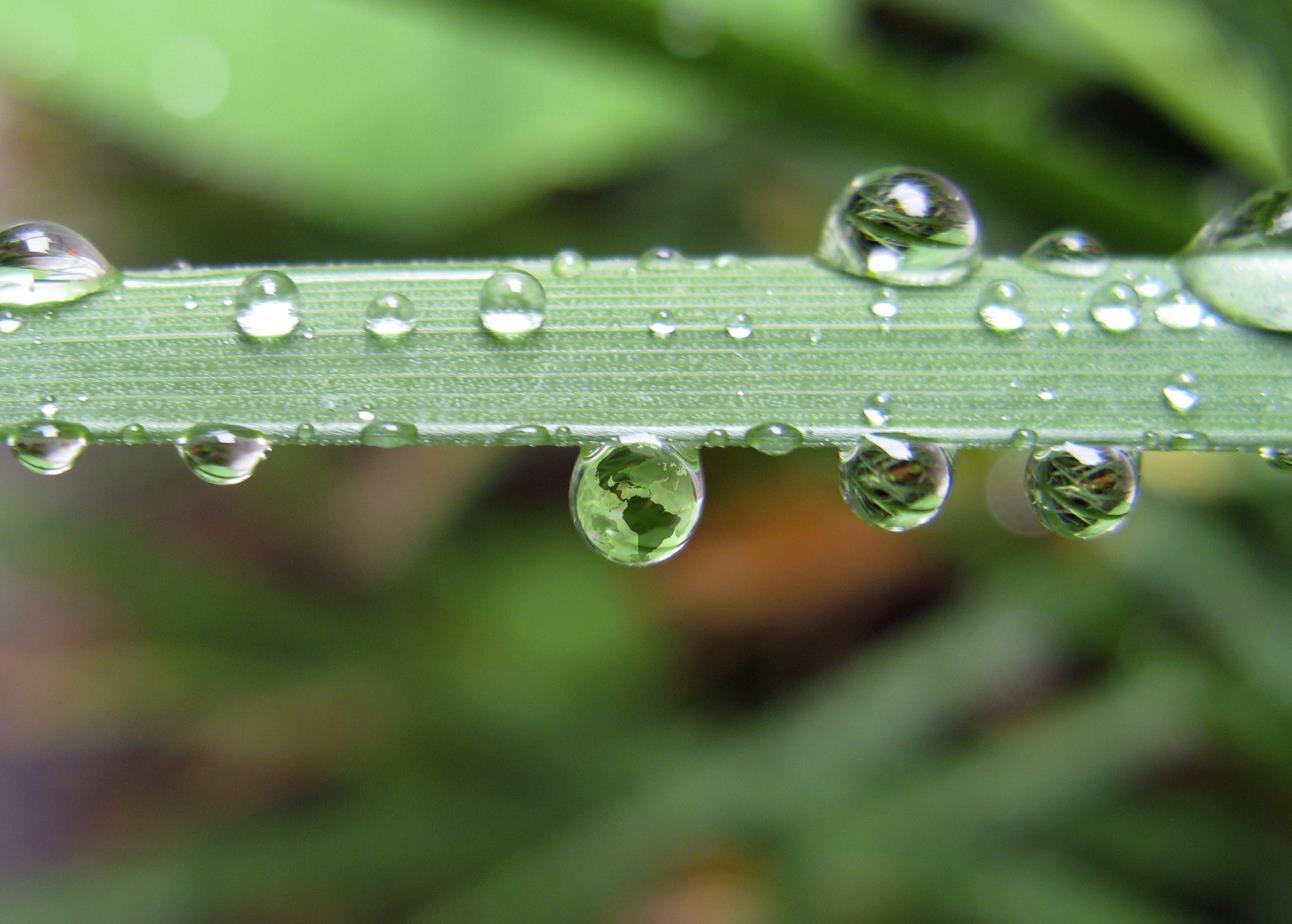
Digitally Manipulated Photography 20" h x 24" w (framed)
This photograph tries to represent the fragility of the Earth and how dependent it is on water. Yes, our planet is composed mostly of water (in my photo it is literally enveloped by it), and in good times it may seem that there is plenty of it but the minute that drop of water falls, so does the world.
Blood: Water

Digitally Manipulated Photography
This photograph was inspired by the Blood:Water Mission, which works to alleviate the AIDS and water crises in Africa. I stumbled across it as I was looking for drought statistics, and the concept felt very powerful.
Mixed Media Artist's Book displayed in acrylic box 5 7/8" h x 13 1/4" w x 4 1/2" d

At times the Rio Grande is so dry we can walk across land where the river once was. This Artists Slide Book was inspired and generated by a two year journey to begin to discover the complex history and current significance of the Rio Grande River as it encapsulates the ecological challenges of our time. Across multiple disciplines and the vagaries of human behavior, the Rio Grande has been reshaped from a meandering river, source of native cottonwoods, wild birds animal habitats and an essential natural water resource, to a dammed, straightened, channeled, over-used economic engine. “Now,” an engineer remarked, “we turn the river on and off.”
The Rio Grande is a primary water resource of the American Southwest. I read the river factually and metaphorically as life blood. We are born of water. We can live for some time without food but not without water. Water is life. I pose the question, “What shall we do when the river runs dry?”
Mixed Media Artist's Book displayed in acrylic box 5 7/8" h x 13 1/4" w x 4 1/2" d
When Rio Grande waters recede, all that is left are stones. This Artists Slide Book was inspired and generated by a two year journey to begin to discover the complex history and current significance of the Rio Grande River as it encapsulates the ecological challenges of our time. Across multiple disciplines and the vagaries of human behavior, the Rio Grande has been reshaped from a meandering river, source of native cottonwoods, wild birds animal habitats and an essential natural water resource, to a dammed, straightened, channeled, over-used economic engine. “Now,” an engineer remarked, “we turn the river on and off.”
The Rio Grande is a primary water resource of the American Southwest. I read the river factually and metaphorically as life blood. We are born of water. We can live for some time without food but not without water. Water is life. I pose the question, “What shall we do when the river runs dry?”
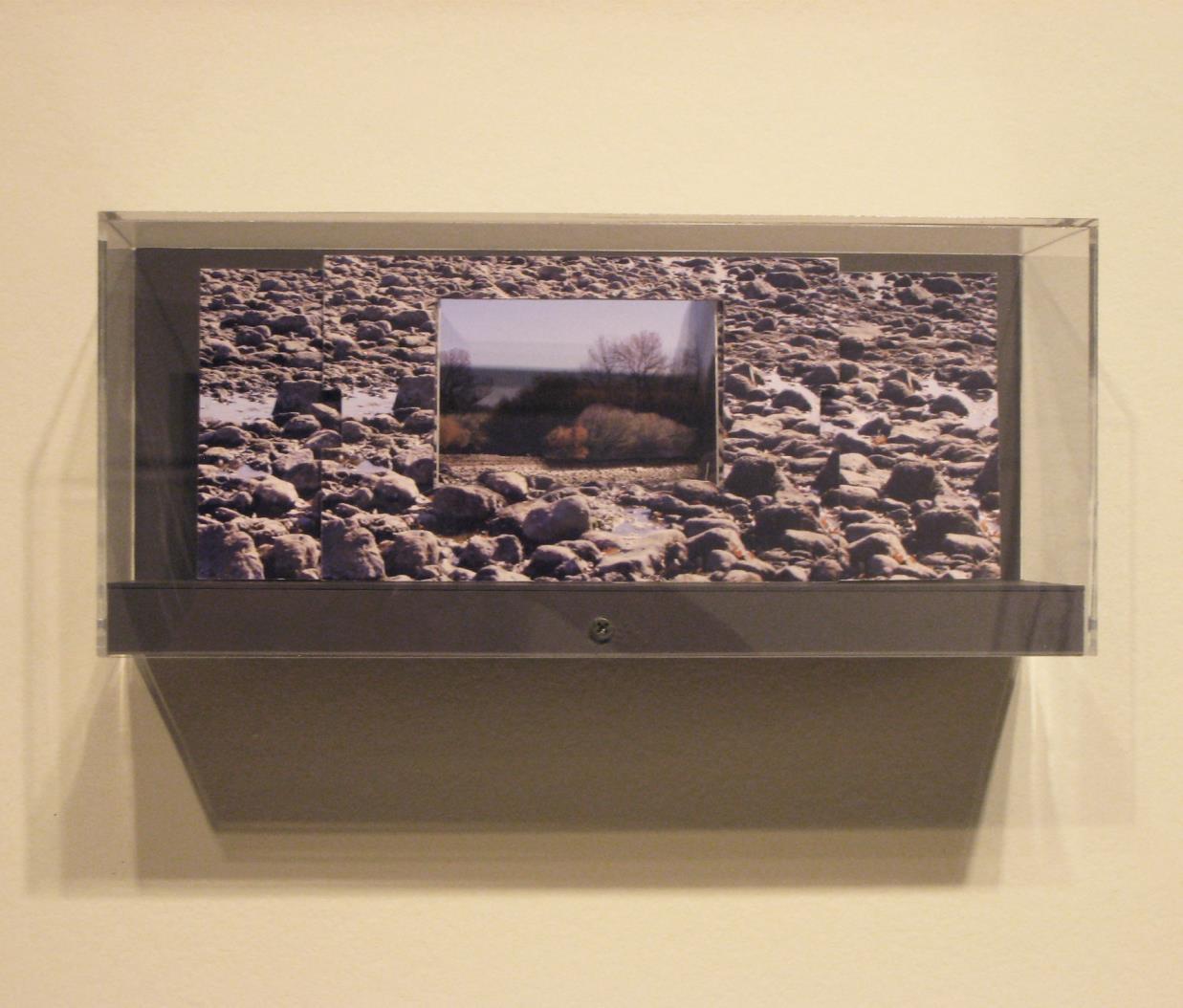
This blue ocean is not the natural color created by earth and sky, but the unnatural blue of plastic bags. It is hermetically sealed. A lone starfish represents the fragility of life suffocating below. The world’s largest landfill floats in the Pacific Ocean; known as the Great Garbage Patch it is composed primarily of plastics. Scientists and U.S. government agencies estimate it to be as large as the state of Texas. Another garbage patch was recently discovered in the Atlantic Ocean.
The problem is global. Dumping into waterways and oceans is not new. What is new is the nature of our garbage which has changed from primarily organic materials to mostly plastic. Plastic is durable and slow to breakdown. Much of it is highly buoyant and capable of traveling thousands of miles through waterways and ocean currants to threaten marine ecosystems and wildlife.
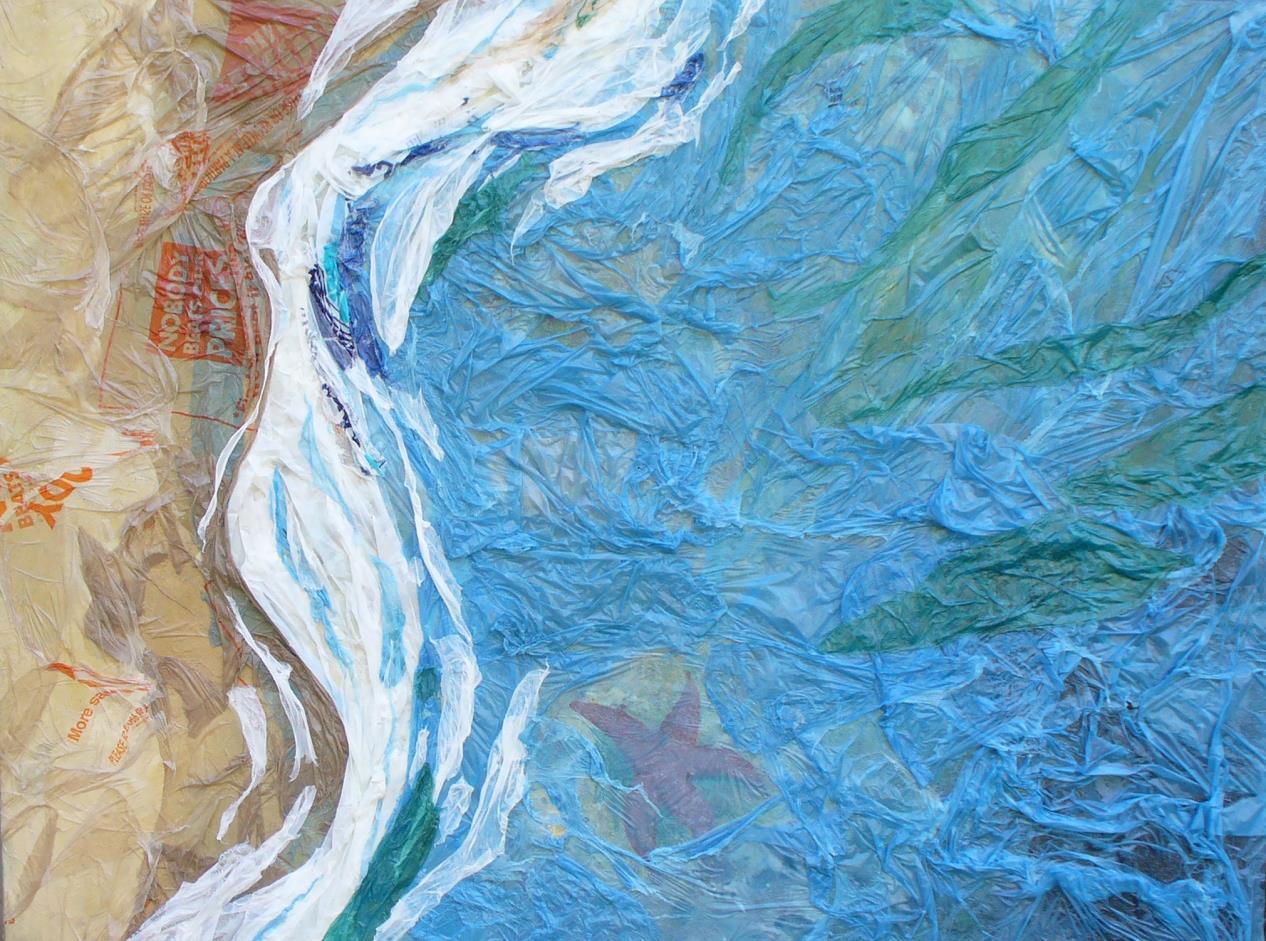
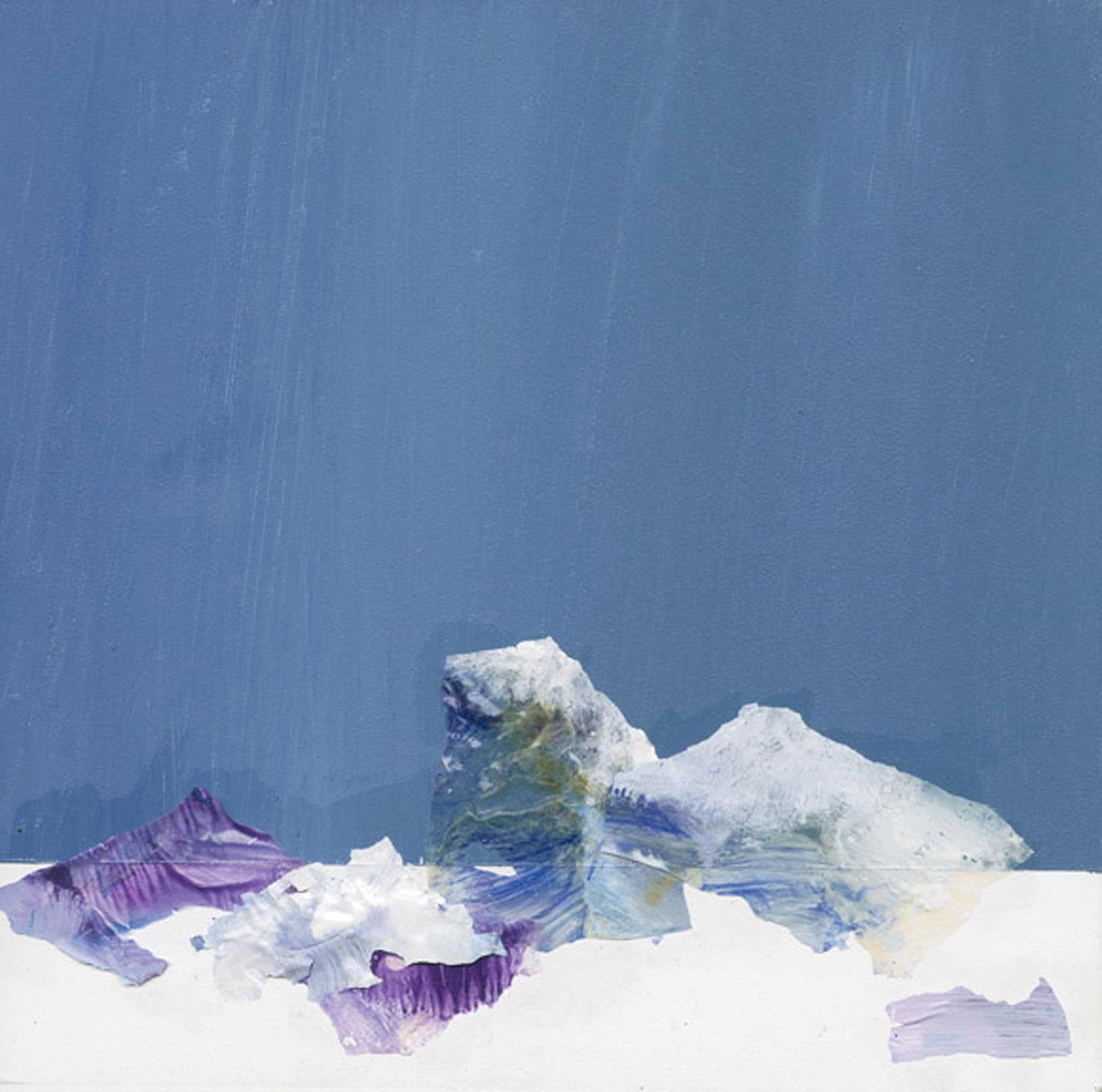 Mary Lou Dauray
Ice and Plastic I
Mixed Media 6" h x 6" w x 2 1/4" d
Mary Lou Dauray
Ice and Plastic I
Mixed Media 6" h x 6" w x 2 1/4" d
Melting glaciers and the “Great Pacific Garbage Patch” are alarming aspects of water change due to global warming and plastic pollution in the Pacific Ocean. At the present moment glaciers are disappearing and a swirling mass of plastic particles weighing 3 million tons has formed between Hawaii and California. Ice and Plastic II, made with paint and recycled leftover palette pieces, was created because of my concern about ice melting and the dangerous proliferation of nondisintegrating plastic pieces worldwide.
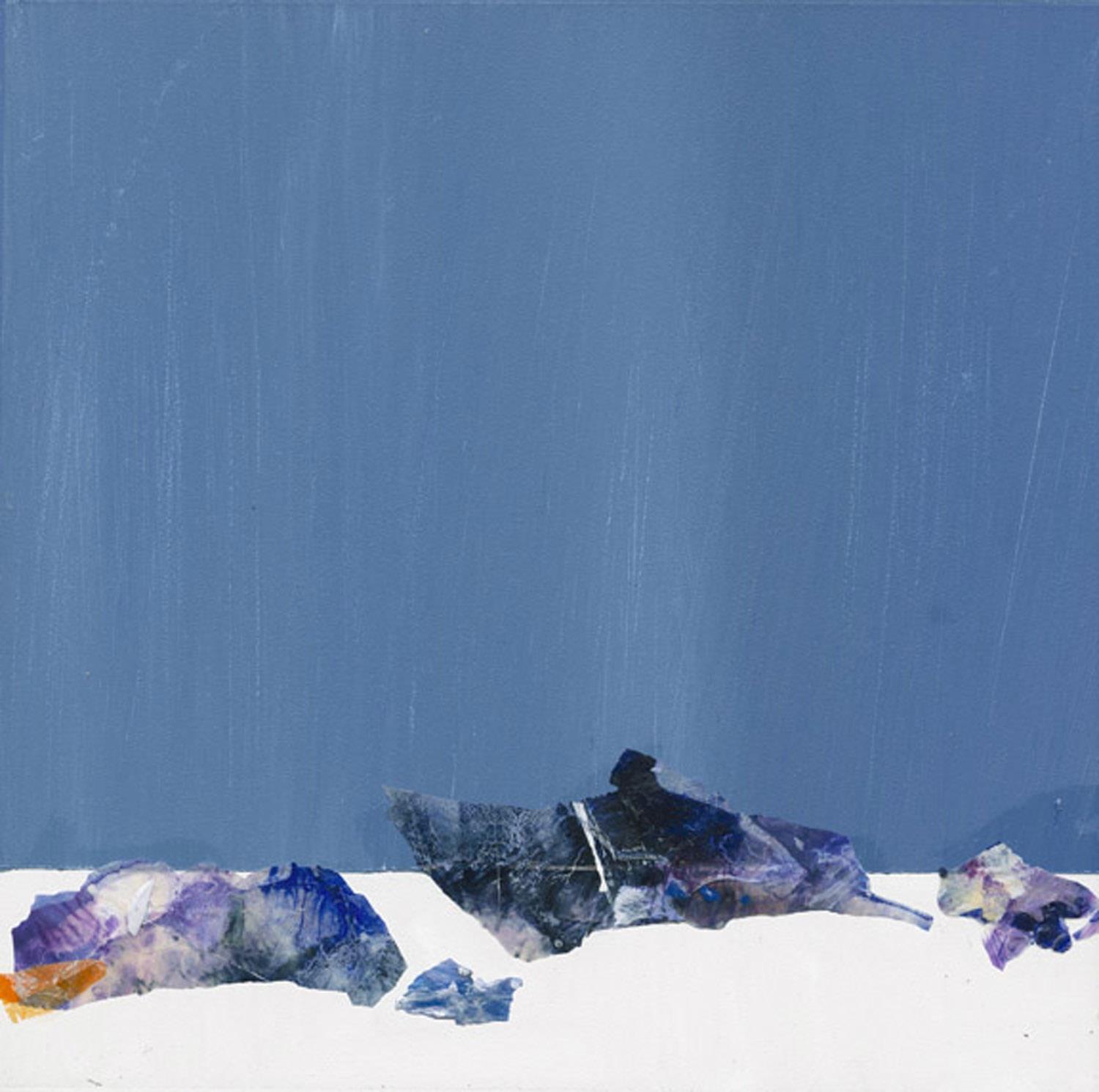
This installation is a transitional stage in a larger project entitled Conveyance. Conveyance is an ‘information kit’ about water policy in Los Angeles. It will consist of a ‘sound art documentary’ (audio only, included in this version) and a number of complementary speculative documents (online water planning game, poster advertisement, map, postcards, and fictional text). By engaging the participant in the documentary and informational process through a variety of media, the project also highlights different approaches to framing information. Meanwhile, extended field recordings draw the participant into a sensory experience that orients and disorients in equal measure. In this installation, two elliptical photos – of L.A.’s Elysian Reservoir (covered with black balls to prevent the formation of a carcinogen) and a suburban lawn –surround a text that alludes to both personal lifestyle choices and issues of groundwater replenishment and water conservation that have become crucial to L.A.’s future.

I need to recharge . . . cut back
As a painter and a healer, I encourage a deeper level of seeing. One of my healing modalities is called Watsu. It is facilitated in a body of 98 degree warm wonderful water. Watsu involves, holding individuals in my arms, rocking, nurturing and floating them, into a sensory ‘state’ that reminds them of who they really are; radiant beings that are connected to everyone and everything else in the universe. The inspiration for this painting comes from hours of watching the luminous pattern of the reflected moonlight on the bottom of the outdoor pool where I work.
I hope that this, representation of the healing and soothing properties of water, evokes the same tranquility of being held, rocked and floated in a pool of beautiful moonlit water.

I sat on refuse while sketching for this painting. Children burned tires. Chickens poked in the mud for food. Below me, stuck in the muck of the boatyard waters of the Mediterranean Sea, were baby strollers, plastic bottles, tires, clothing, food wrappers, and paint cans. Children were swimming.
I am the Expedition Artist for Phoenicia, a 6th century BCE Phoenician replica boat. I am painting water along the expedition route in Europe, the Middle East, and Africa. This painting is of Phoenicia reflected in an oily puddle in a dockyard on the island of Arwad, Syria.
Water is a shared resource amongst all people. It is the livelihood for this region through fishing, boat building, and farming. Destruction surrounds every site where I paint water. My work features cigarette butts, oil slicks, drinks cans, and invented creatures. Looking for formal elegance and tranquility is my way of coping with the destruction.

The Victoria and Alfred Waterfront in Cape Town is a commercial powerhouse and a good example of how water can be used to generate business and tourism in Africa. I was staying on the Waterfront on an 8th Century Indonesian replica boat, The Borobudur.
Diners and shoppers rattled behind me on the cobblestones, clanking their drinks and chatting about their recent purchases. I ignored them as I crouched right down to get a closer look at the reflection of a battered red tugboat in the marina.
Through the theme of water, I explore natural beauty and the consequences of the human footprint on landscapes all over the world. As a result, I make every effort to paint in an environmentally responsible manner. I use low or no VOC paints, thinners, and mediums, and FSC certified wood for stretchers. Some of the paint used in this painting was recycled from Cape Town.
 Danielle Eubank
Oil on Linen 38" h x 38" w
Danielle Eubank
Oil on Linen 38" h x 38" w
As I sketched this turquoise and yellow dingy, I heard the lapping of waves, seagulls, and the gentle clanging of ropes and chains in the marina beyond me. Floating beside me was a replica of Sir Francis Drake’s Golden Hind. Tourists ambled between tea shops, gazed into shop windows and cursed the rain. Brixham, Devon, UK, relies on fishing and tourism –industries inextricably linked with the water. Like many places I have painted along the English Channel, Brixham is a town of ‘real’ people who keep the village and its waters visibly clean. There is still pollution here, however. Not just floating chips, crisps wrappers and submerged tires, but what I have painted here, the scum of oily film on the water. We all depend on water, but seldom really look at it, which is why I focus right in, creating unusual forms, curlicues, creatures, to draw the viewer in.
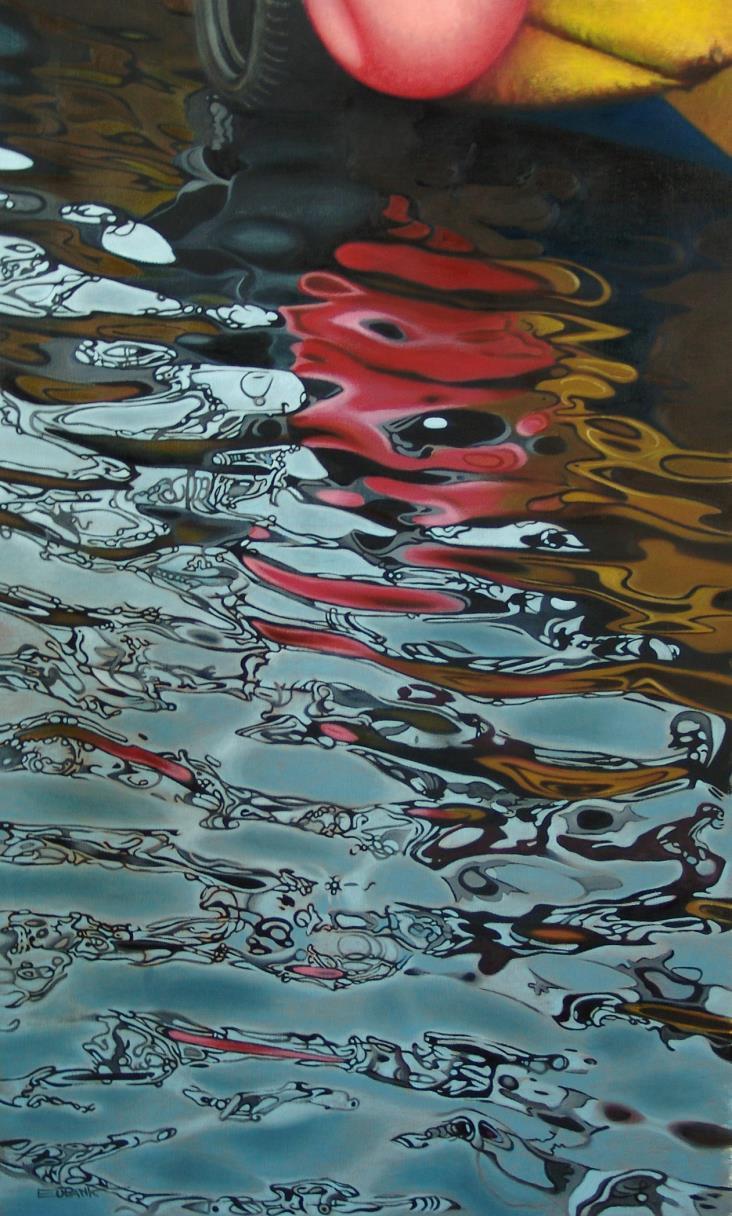 Danielle Eubank
Brixham
Oil on Linen 46" h x 28" w
Danielle Eubank
Brixham
Oil on Linen 46" h x 28" w
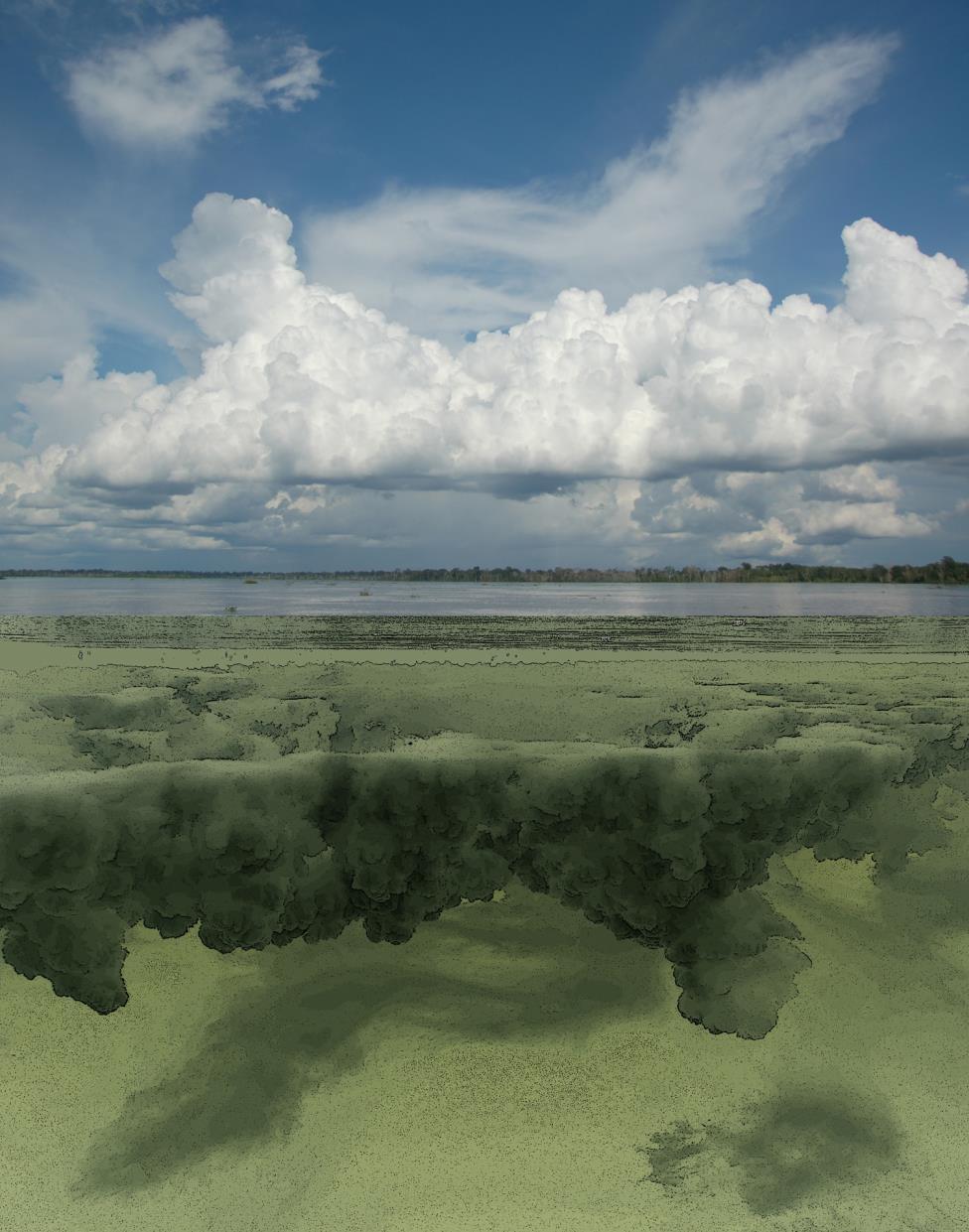
Photomontage on Resin-coated Paper 38" w x 30" w x 1/2" d
Both Hung out to Dry I and Hung out to Dry II juxtapose natural and altered sky/water images to create ‘landscapes’ that are simultaneously picturesque and disturbing, serene and ominous. To emphasize the fragile and transitory nature of the subjects, the images adhere to thin paper attached to the wall by clothesline and clothespins. A glossy resin-coated surface highlights the wetness while the titles and installation suggest the contrary. The direction of human activity, sustainable or destructive, will determine the ultimate outcome. These pieces are part of an ongoing series of photo giclées and etchings that play with surface and perspective in two dimensions. The original photography was shot on the Amazon River in Peru.
In the Ice meets Sky series, I sought to capture the glaciers as I saw them. It was my first experience seeing a glaciers and I was astounded how still everything was, yet in constant motion. The ice was dripping, cracking, as it was melting and breaking apart into the icebergs. The icebergs at first looked like they were still, but were again in constant motion as they were moving down river towards the sea. It occurred to me that this painting would be in a sense, a history painting, because the glaciers will not look like this again, as fast as they are disappearing from this earth.
 Sarah Beth Goncarova
Oil on Canvas 44" h x 44" w x 2" d
Sarah Beth Goncarova
Oil on Canvas 44" h x 44" w x 2" d
The Third installment of the Where Ice Meets Sky Series explores the breathtaking sights of the Vatnajokull glacier in Iceland as night approaches. At once, this painting captures the awe inspiring beauty, stillness and movement, and the unstoppable disappearance of one of the world’s largest glaciers
 Sarah Beth Goncarova
Oil on Canvas 48" h x 44"w x 2" d
Sarah Beth Goncarova
Oil on Canvas 48" h x 44"w x 2" d
“Touching the Bay” is a rather large piece celebrating the point of contact with a tree branch in the hot summer afternoon, and the cool restorative water it resides beside and is nourished by. Two old friends share a momentary touch and monumental reminder of water’s Zen contribution to our wellbeing.
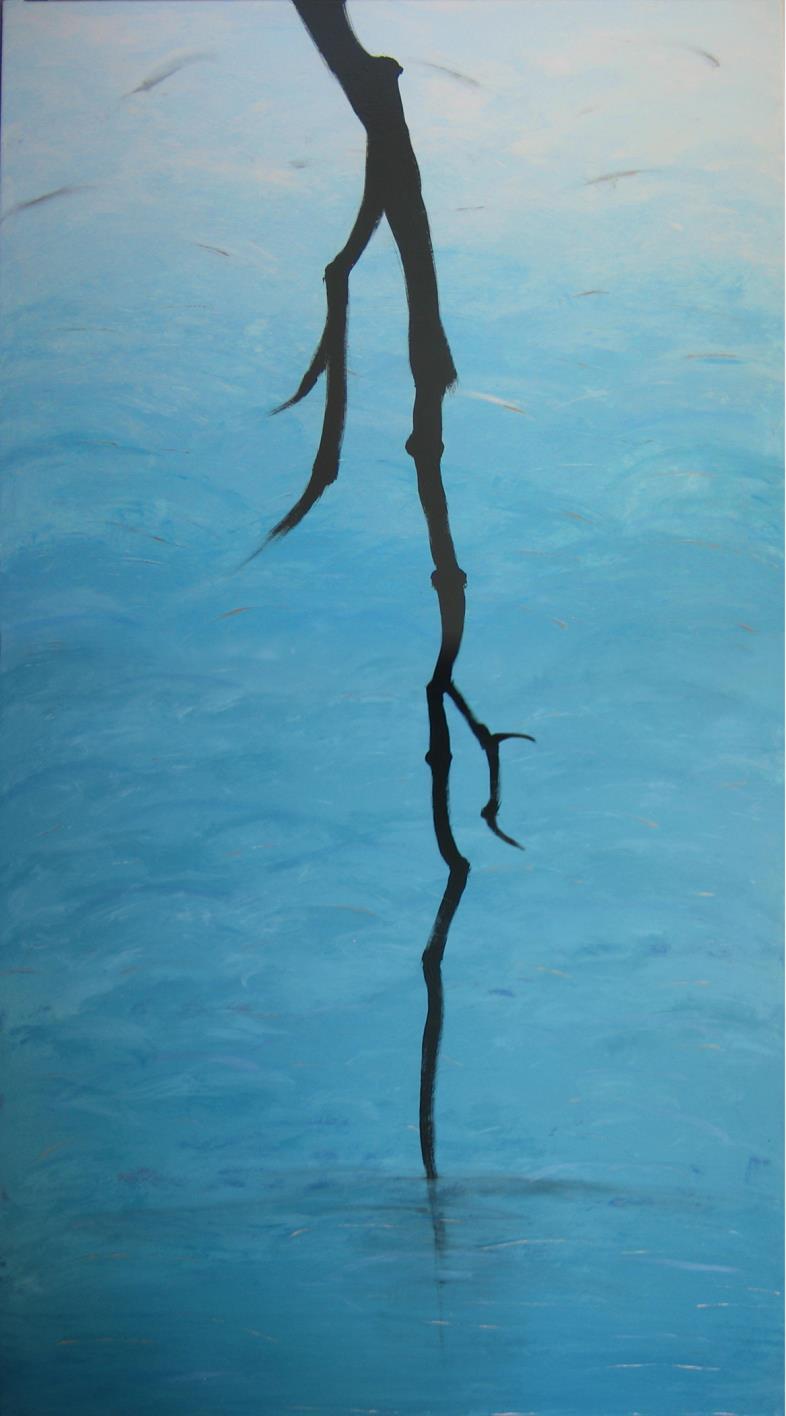 Sevilla Granger
Acrylic on Canvas 90" h x 51" w x 2" d
Sevilla Granger
Acrylic on Canvas 90" h x 51" w x 2" d
My work considers five-element theory while exploring the natural environment through performance, painting and sculpture. In "Ice and Water" I have re-purposed a plastic child's dress hanger to create a melting female form on canvas. This piece considers how non-humans feel the negative affects of humankind in a very personal way.
 Acrylic, Plastic, Gloss Gel Medium 40" h x 40" w
Acrylic, Plastic, Gloss Gel Medium 40" h x 40" w
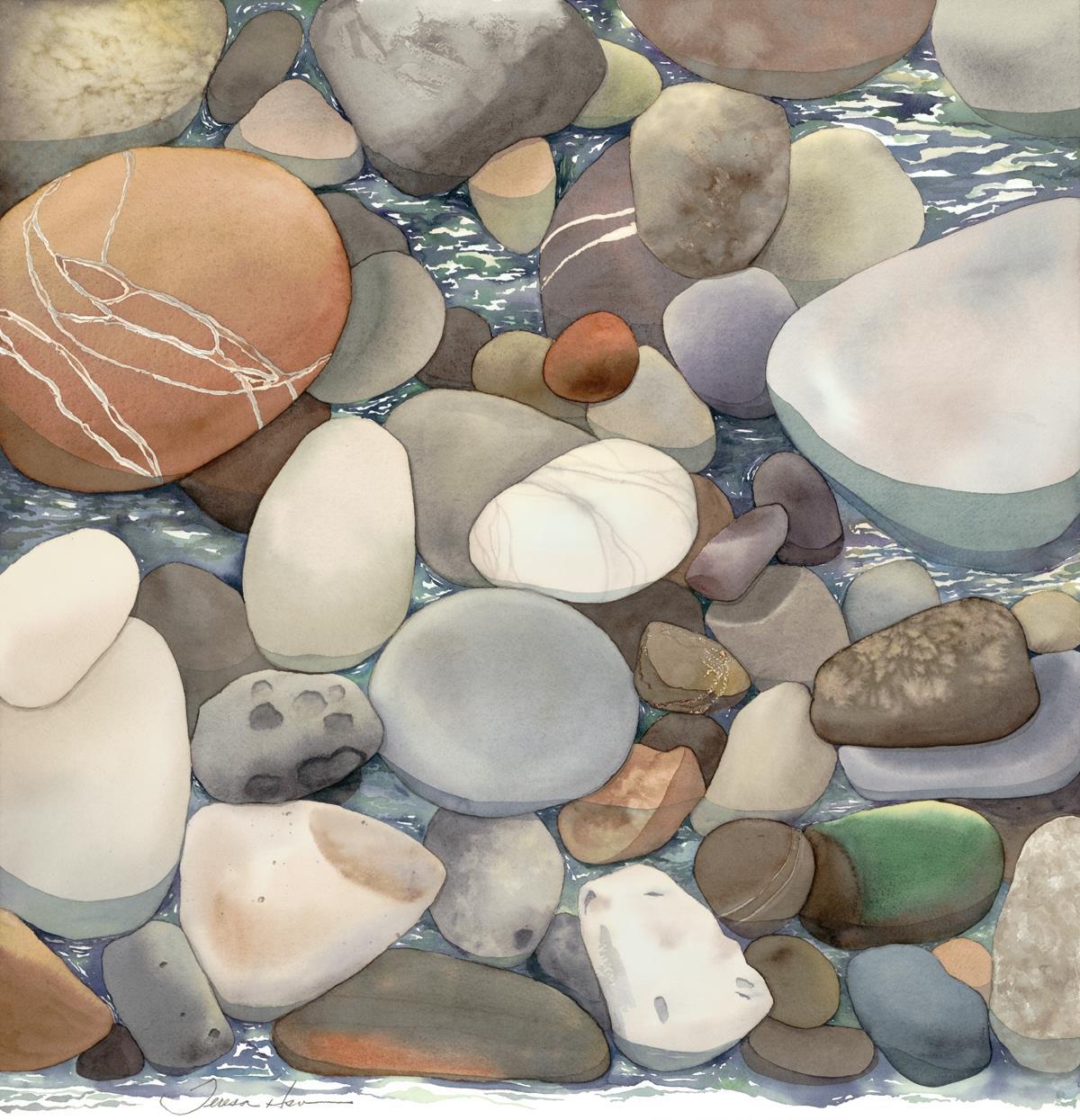
I love studying details of nature and that reflects on many of my paintings. Every piece of rock on this planet has gone through centuries of earth movements. Shaken by earthquakes, fire. Washed by water, waves and bathed under the sun. Polished and carved by the wind and sand. As result, we have these beautiful wonders. From little pebbles to giant boulders, we learn to appreciate our mother Earth and not take her for granted.
I hope this painting reminds you of this and take time to pay attention to nature and appreciate our planet.
Teresa Hsu Watercolor on Paper 34" h x 31" w x 1-1/4" dOver 70% of our planet is covered with seas comprising a world ocean. Not only are they teaming with plant and animal life, but they also play a major role in regulating earth’s climate. Now they are being pushed to the brink by global warming, pollution, trash, noise and overfishing linked to human intervention. It’s getting personal. That’s why I included myself in an image titled “Protect the Oceans.” Here the seas are not out of sight or mind but directly related to my own body as fish swim over a coral reef near the hem of my dress. My left foot is immersed in the junk-filled garbage patch between the Pacific coast and Hawaii. My hair is on fire due to global warming. As an eco artist, I’m raising my consciousness about the state of the oceans and taking responsibility for what’s happening by protesting the use of plastics and encouraging recycling. I’m also urging others to do the same.
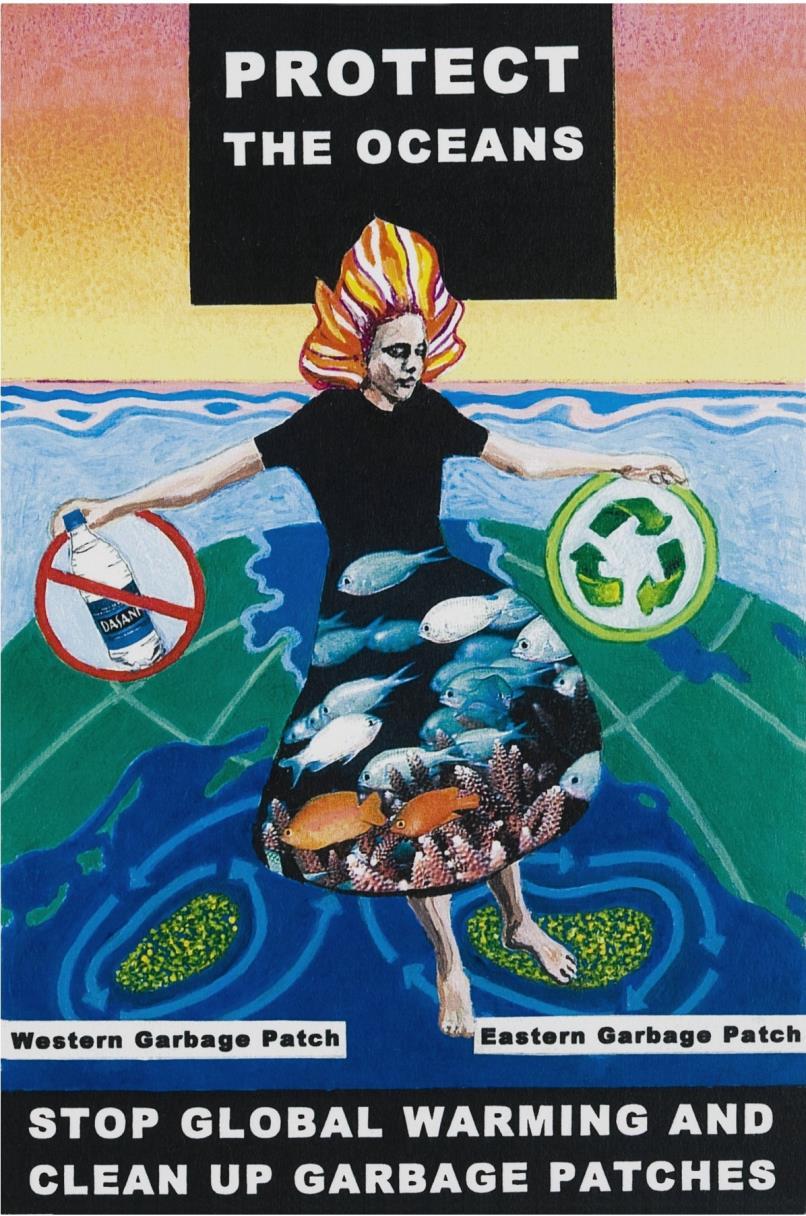
Acrylic on Canvases (wall Installation) 100" h x 100" w (25 - 20" x 20" Canvases)
Eco art addresses community values and human relationships with nature. It may speak with both the mind and heart, as does my painting. “Sea of Blue” is relevant to eco art as it focuses awareness on nature. My microscopic view, it represents ice’s molecular breakdown into water. Conceptually, the cellular patterning in my painting is about looking closely into something. Here it alludes to the issue of glacier melts and the effects on global warming. This painting also connects me with my Hindu upbringing and heritage. Its field of circles is made by my repeatedly scratching the wet painted surface. The physicality of the repetitive circling process transports me into a calming meditative state. It is as though I am immersing myself into water as in ritual bathing, a cross-cultural purification rite. My intention is for this large blue painting to similarly draw the viewer into it.
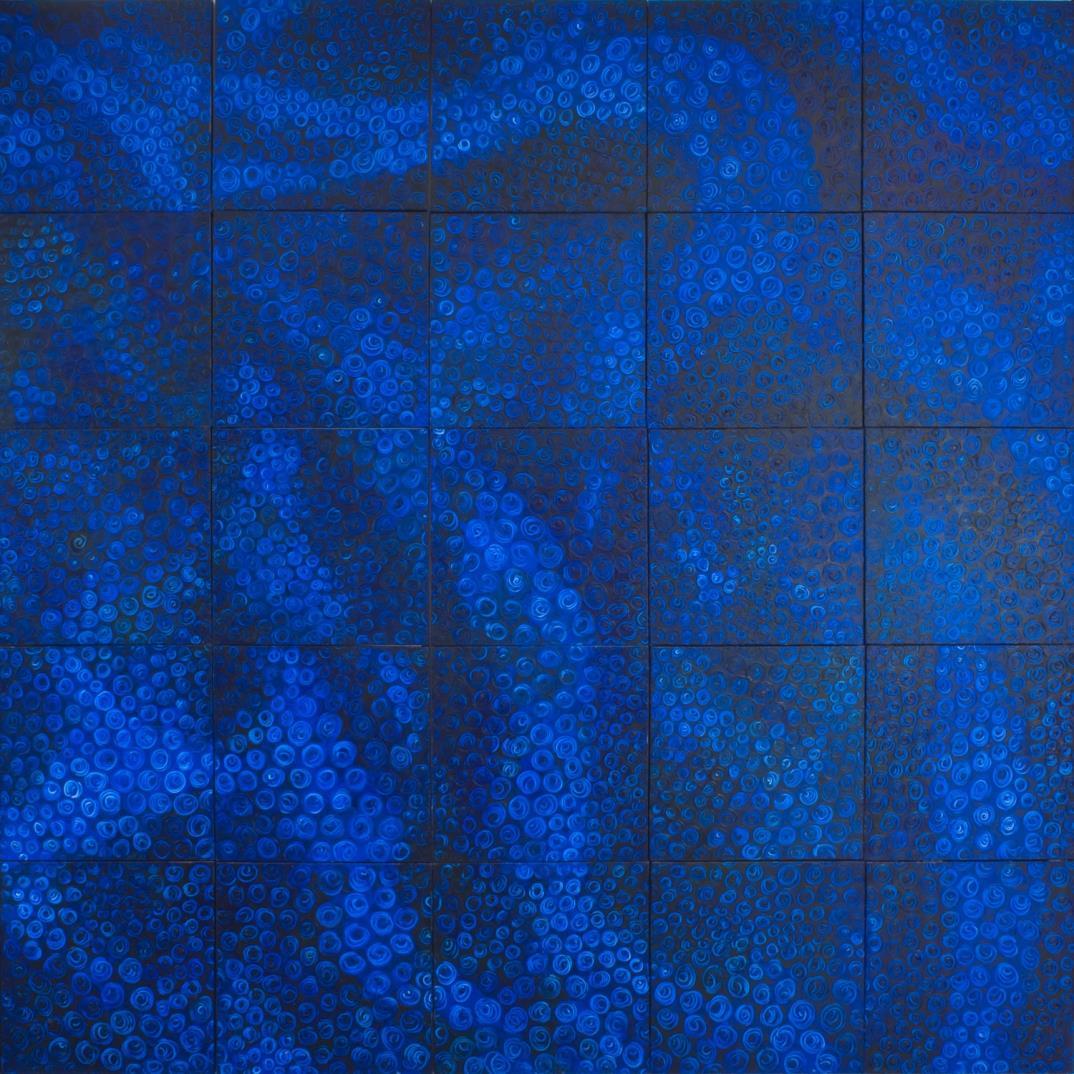
As population increases and development calls for increased allocations of water for the domestic, agriculture and industrial sectors, the pressure on water resources intensifies, leading to conflicts among users, and excessive pressure on the environment. The increasing stress on freshwater resources brought about by ever rising demand and wasteful habits, as well as by growing pollution worldwide, is of serious concern. In my practice, I have been working on color interactions by laying paint to create a complex color field. I thought about water and how I could re-imagine it with paint. “Precious” came about when I found a discarded children’s rocking chair in my neighborhood. I equated the preciousness of childhood with that of water. One is the fleeting time that is the embodiment of innocence and the other signifies purity, cleanliness, wholesomeness. One is fleeting by design, the other by ignorance.
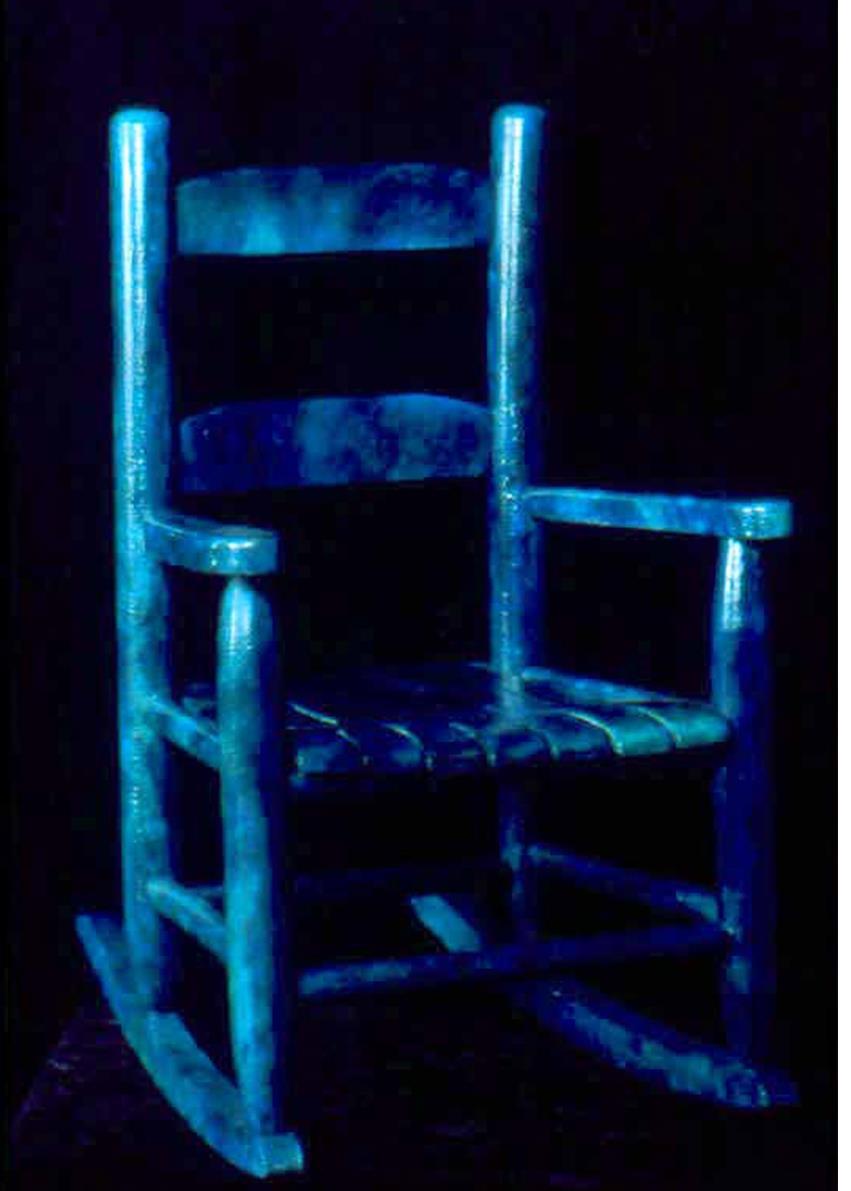 Katherine Hisako Kodama
Precious
Oil on Found Child's Rocking Chair 23 1/2" h x 15" w x 19 1/2" d
Katherine Hisako Kodama
Precious
Oil on Found Child's Rocking Chair 23 1/2" h x 15" w x 19 1/2" d
The oil paintings I am submitting for the Blue Planet exhibition express the expansive, timeless experience of meditative mind states inspired by the powerful experience of being near the ocean. The almost infinite expanse of water and sky and the perpetual dance of the waves create a space where healing can occur. By connecting to the deep transformational qualities of life and the peaceful place of silence within, people can gain the power to help each other and the planet. I want to remind people of the depth of beauty and power of the oceans. By being touched by the beauty and moved by the connection to the colors and emotional tone of water, a desire is created in viewers…the desire to appreciate, protect and value our planet’s precious resource and to reconnect with nature.
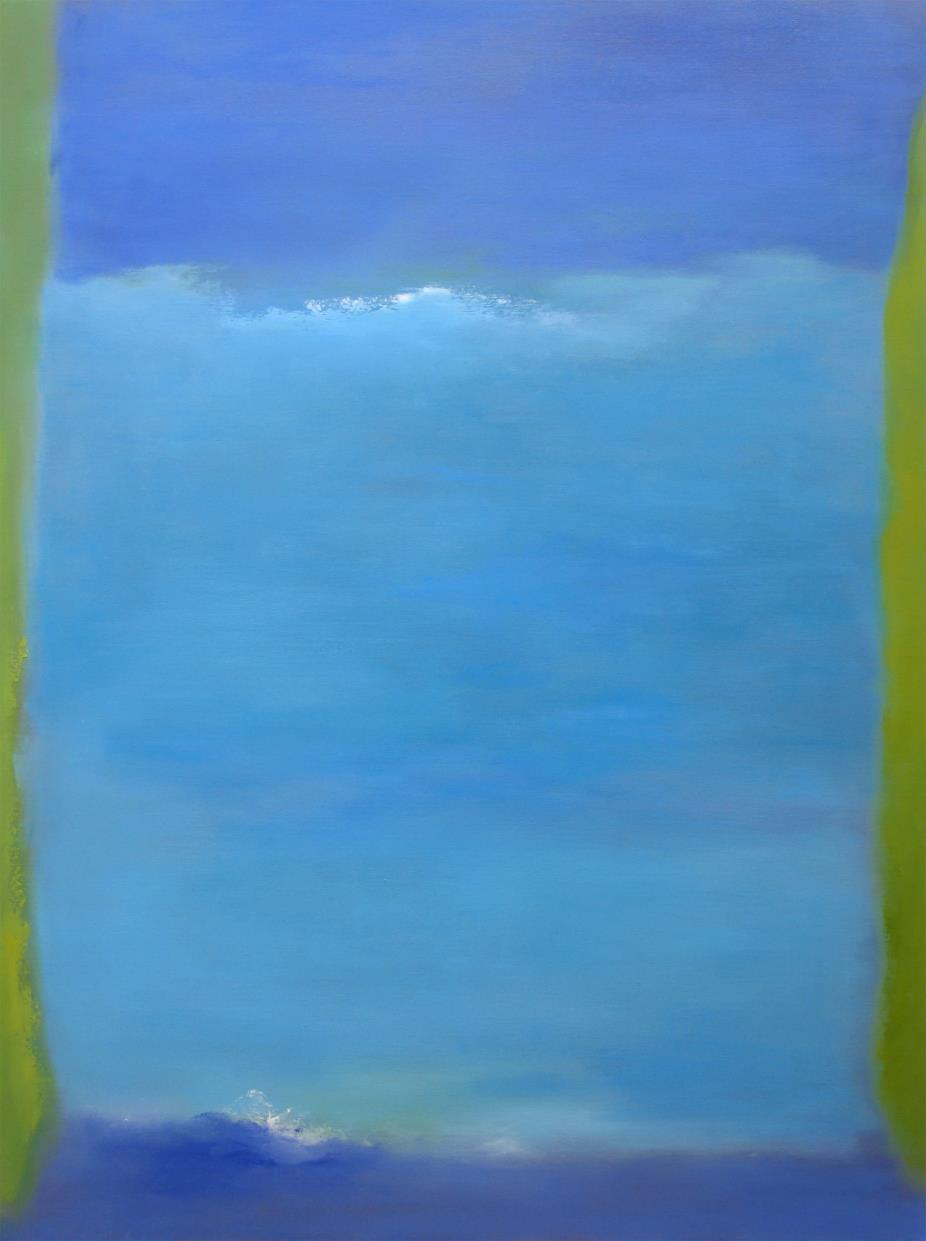 Paridiso
Oil on Canvas 48" h x 36" w x 1" d
Paridiso
Oil on Canvas 48" h x 36" w x 1" d
My work from the past several years is a result of my concern with the state of the environment. From deforestation to global warming, my paintings and installations try to open a dialogue through a melding of representation and abstraction, using unique or unconventional materials and vivid colors and textures that draw the viewer in for a closer look. Extensive research and experimentation are always the first step in developing a concept and the resulting work. This current body of work deals specifically with our oceans and their precarious condition. From phosphates and foreign chemicals, to prehistoric algae growing in imbalanced proportion to other ocean plant life, to huge vortexes of garbage swirling around in our waters we have a problem.
 Linda Kunik
Acylic on Panel 60" h x 48" w x 2 1/2" d
Linda Kunik
Acylic on Panel 60" h x 48" w x 2 1/2" d
Nothing to me is more rejuvenating then soaking in warm water! Earth's most essential resource, water, has been used for centuries to soothe and restore body mind and spirit. Leonardo's Day Spa is an unconventional blend of my love for renaissance woman and healing water resorts. Mineral springs and resorts to me are special surreal gathering places where we find ourselves covered in clay, floating in warm healing water while listening to repetitive space music. These renaissance woman are here to have some modern day spa fun!

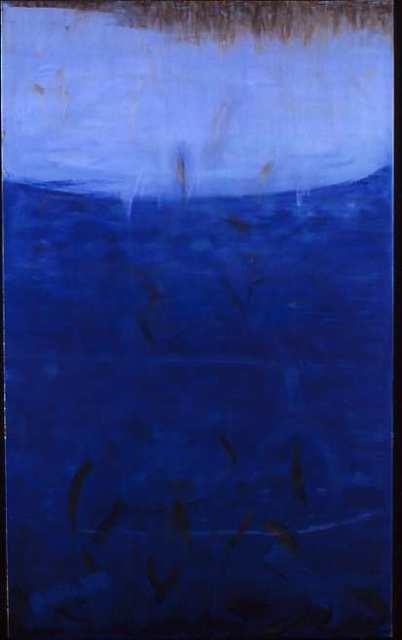
Oil and Beeswax on Canvas 60" h x 36" w x 1 1/2" d
This body of work addresses the topic of archipelago destruction from global warming. The idea was inspired by my visit to the Republic of Maldives in 2000, where I discovered nature's palette for the first time. However, I was very sad and upset to see miles of dead coral. They were grey and brown with very few marine inhabitants. This was the result of global warming.
Although, I am not a history or political painter, this experience was too strong to ignore. I had to paint about it. The thatched roof texture is the main theme in the collection. It is a place marker for people, culture, and nature. The brick or monolith symbolizes man's interference with nature. The compositions have a push and pull relationship among the organic and inorganic forms.
My work involves the Landscape - figuratively and literally, inferred or represented. Meaning is contingent upon the vast sublime and tangible interpretations that lie within the broad, accessible themes of language, sky-as-metaphor and the Human Condition.
I often question and redefine our sense of place through the use of emotive words in conjunction with notions of manmade and natural ephemeral movement, such as flight paths, bullet paths or wind. Lately I have been "translating" words into flight paths. They become maps in the mind for a visceral response to identity, domesticity, global connections and so on. This spring, my work has been evolving around the elusive fragility of nature and ephemeral water, such as ice, sublimation, precipitation, dehydration, mist and clouds. In essence, the work addresses the un-detectable things we need to exist but do not notice, and sometimes take for granted.
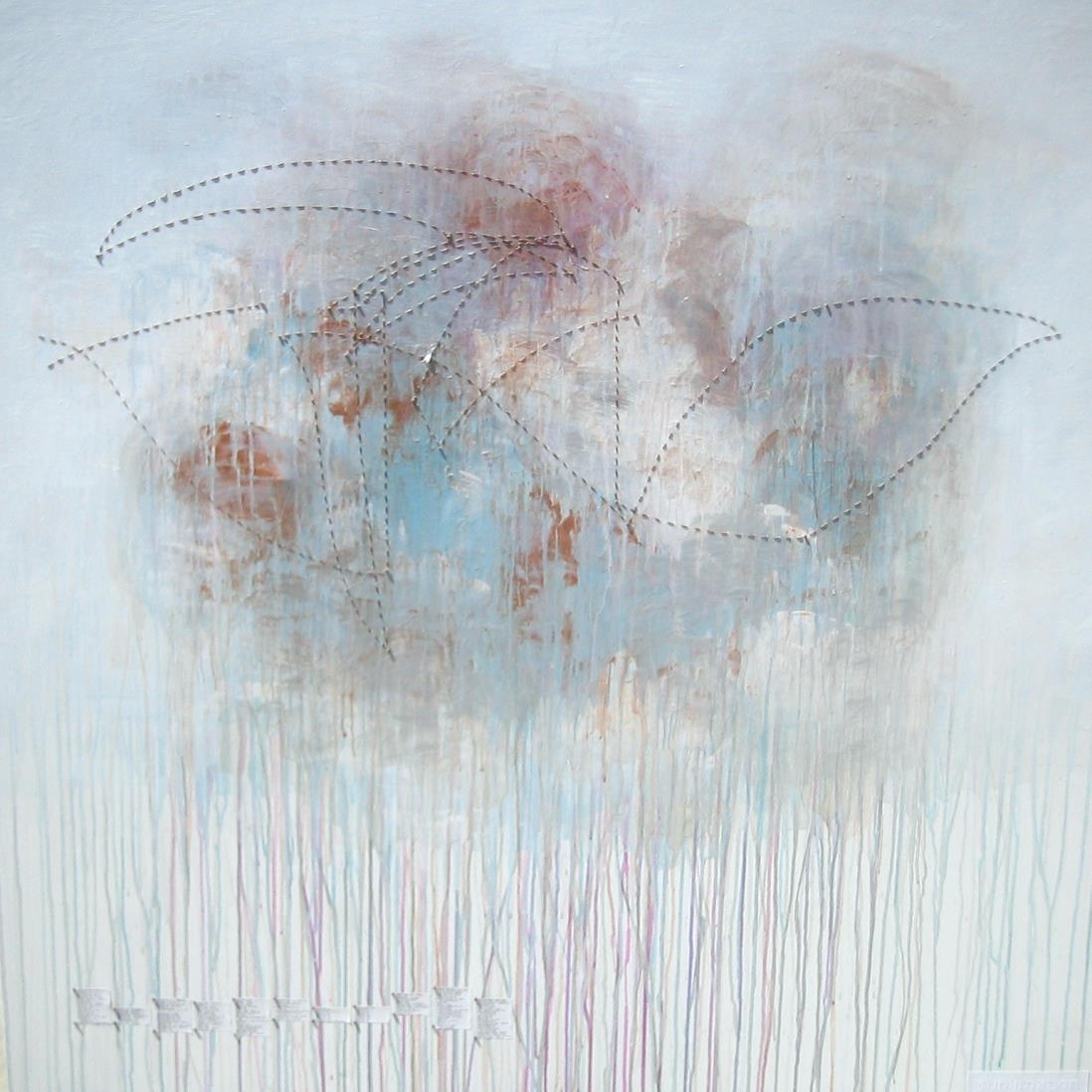
Photograph Installation 32" h x 72" w x 48" d
The project is an investigation of water in context of Los Angeles. Geography. While part of groupLA2008, 25 photographers documenting their Los Angeles neighborhoods, I focused on water use. The result invites the viewer to consider water here and now as well as in the past and future.
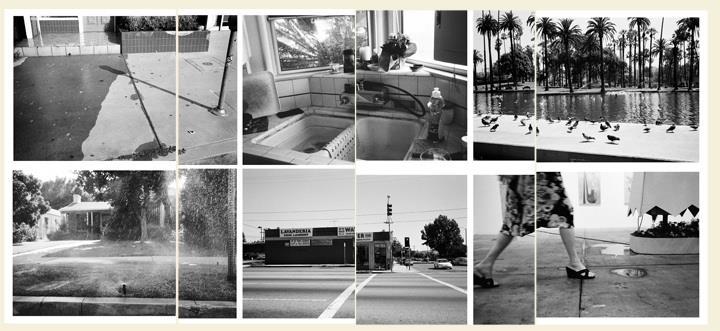
Limited edition linocut reduction print speaks about the “warnings” of conservationists, and global experts concerned about our eco-system centered around the rapid melting of ice caps produced by the warming of the planet; especially the warming of our oceans. Depicted at the top of the visual image, human hands are “wringing” out the last drop of ice on the planet earth. At the center of the pictorial frame is the breaking/trickle down of the ice/water towards two different effects of the melting. The image of the boat (left) is unable to stay afloat, almost capsized by to much water in our oceans. A warning of rising sea levels. The boat (right) is resting on a wasteland of dry desert, the heat rising from the ocean floor. The narration puts us on our radar in restoring our oceans.

Limited edition linocut reduction print is an imaginative narration of the global warming and heating of our oceans and the probable results of killing off of sea life. At the top of the pictorial frame depicts a light bulb, a visual clue of the thermal expansion from melting of sea levels. Beneath the choppy surface, as your eye moves down to mid level of the frame are schools of fish swimming in a confused state slamming up against each other. As one looks closer, one can see an x-ray exposure of bones and death of the fish life. The crushing pressure of the heat is coming from both the top (light bulb) and bottom of the ocean floor (lighter). Additionally, there are two visual square spaces in the pictorial frame. The first depicts the concept of plant life. The other depicts a hand, a visual clue commenting on the human interaction of restoring our oceans.

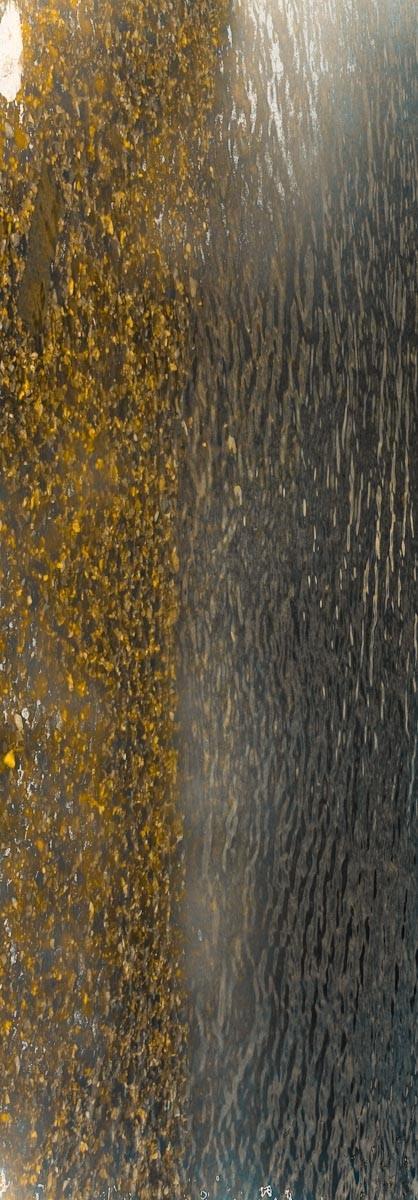

Print on Aluminum
Water is essential to all life on the planet. It surrounds us if we are fortunate, everywhere we look. Seeping from pipes in the ground, my yard is flooded, water wasting. Out the window I see the ocean in its vast resourcefulness. Sometimes, the water becomes contaminated and thus no longer as helpful to us. Other times, it is pristine and refreshing, an inspiration to us. The images for this show were taken in February and March of this year. In March, I travelled to the Italian RivieraPortofino. I took a whole series of photographs of the fishing village of Santa Marguerite. Fishermen’s block and tackle, cleats, ropes and chains were abundant. I also found many good images of the surface of the water reflecting the cool winter sun. Two of these images, On The Water I and On The Water II, abstract the pristine ripples on the surface of a body of water that supports a small industry and way of life for a whole village.
Laura D. McHugh Photography 30" h x 20" w x 1/4" dCurrently my work concerns the effects of climate change on sea organisms, like corals and the tiny sea snails called sea butterflies. Both are dying at an alarming rate from a combination of warming and acidification of the oceans, and may become extinct within this century if greenhouse gases continue to accumulate in the atmosphere at the current rate. The results would be catastrophic. Coral reefs support millions of ocean species, and sea butterflies are abundant at the bottom of the food chain. Without them, virtually all ocean life would be in danger. Although this is a very serious subject, my linocuts (“Danger (Endangered) Zones”) and mixed media prints (“Unnatural Histories” and “Experience Paradise”) often approach it with irony.
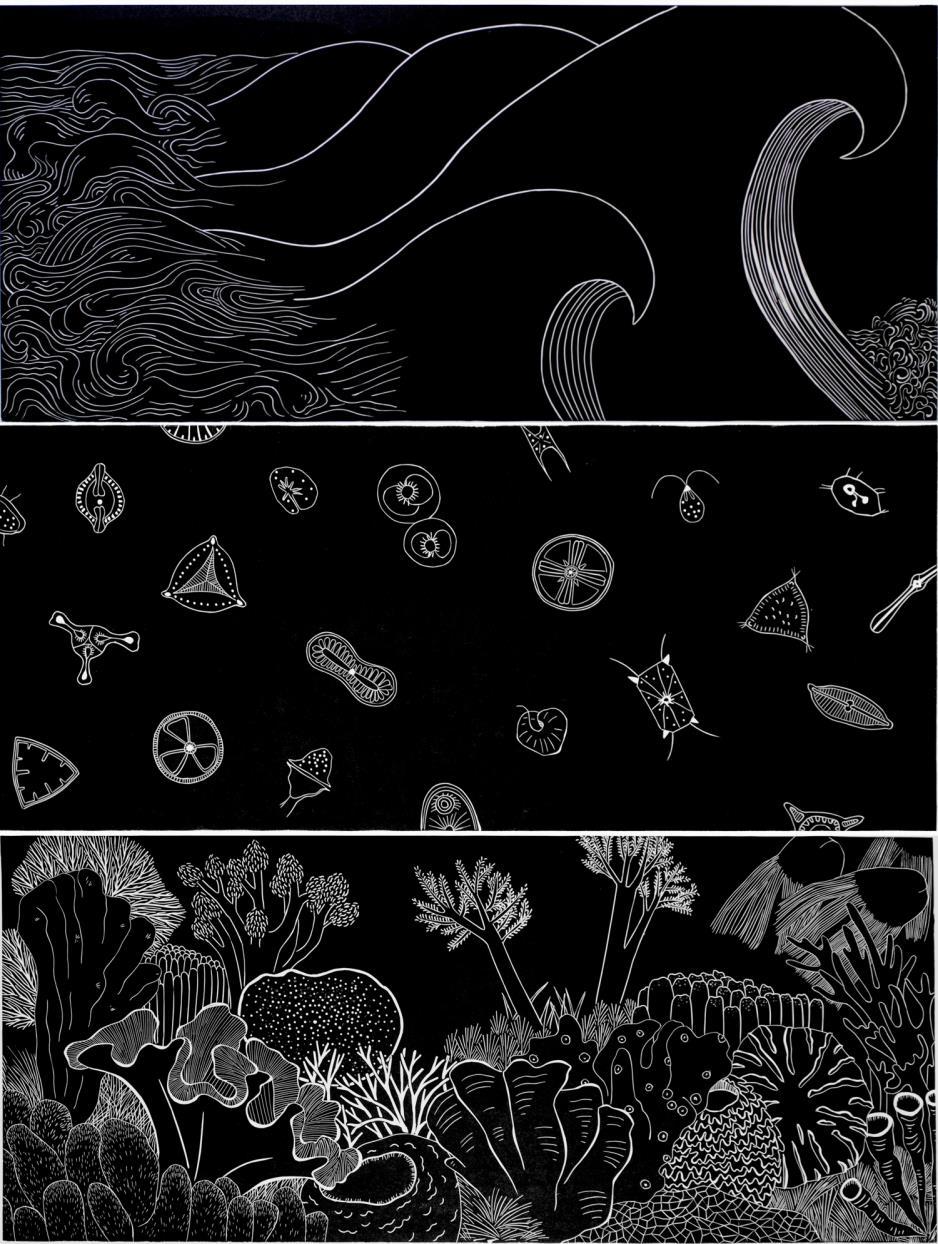 Barbara Milman
Linocut 50" h x 40" w
Barbara Milman
Linocut 50" h x 40" w
Over half of the earth’s surface is covered by water. Without it life cannot exist on our planet. I want this piece to be a visual reminder that our lives are dependent on the fragile alliance between our choices and health of the third planet from the sun. Without our oceans, rivers, lakes and streams life, from microorganism to human beings, cannot thrive.
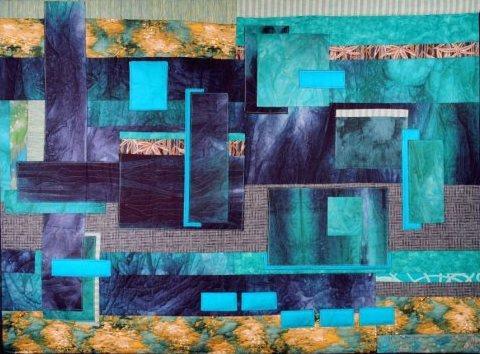
Mixed Media
4" h x 3' w x 2' d (for each 5 island)
Salt Water Taffy is an installation that combines ceramic, rubber, hair and other material. The installation utilizes the floor of the gallery. The work is a creation of an environment for the viewers to walk around and engage with physically. The forms are familiar but the viewers are still kept pondering what it is they are truly seeing, with the intent to visually attract and spark an interest in nature. The title refers to the salt and water that compose the ocean, and taffy refers to the fun and edible like colors used on some forms. I fabricated forms that were finished with rich matt or glossy colors and textured surfaces. The individual pieces became hybrids of creatures I’ve seen in photographs, and my imagination. The installation is intended to change in size each time it is installed in a different space, mimicking the constant change found in the oceans.

65% Water refers to the amount of water our bodies are made of a thus just how essential water is to our existence. This image represents a woman diving head first into white space, or the unknown. The silhouette was taken from a 1920's Greek Olympic poster. She appears strong and brave!
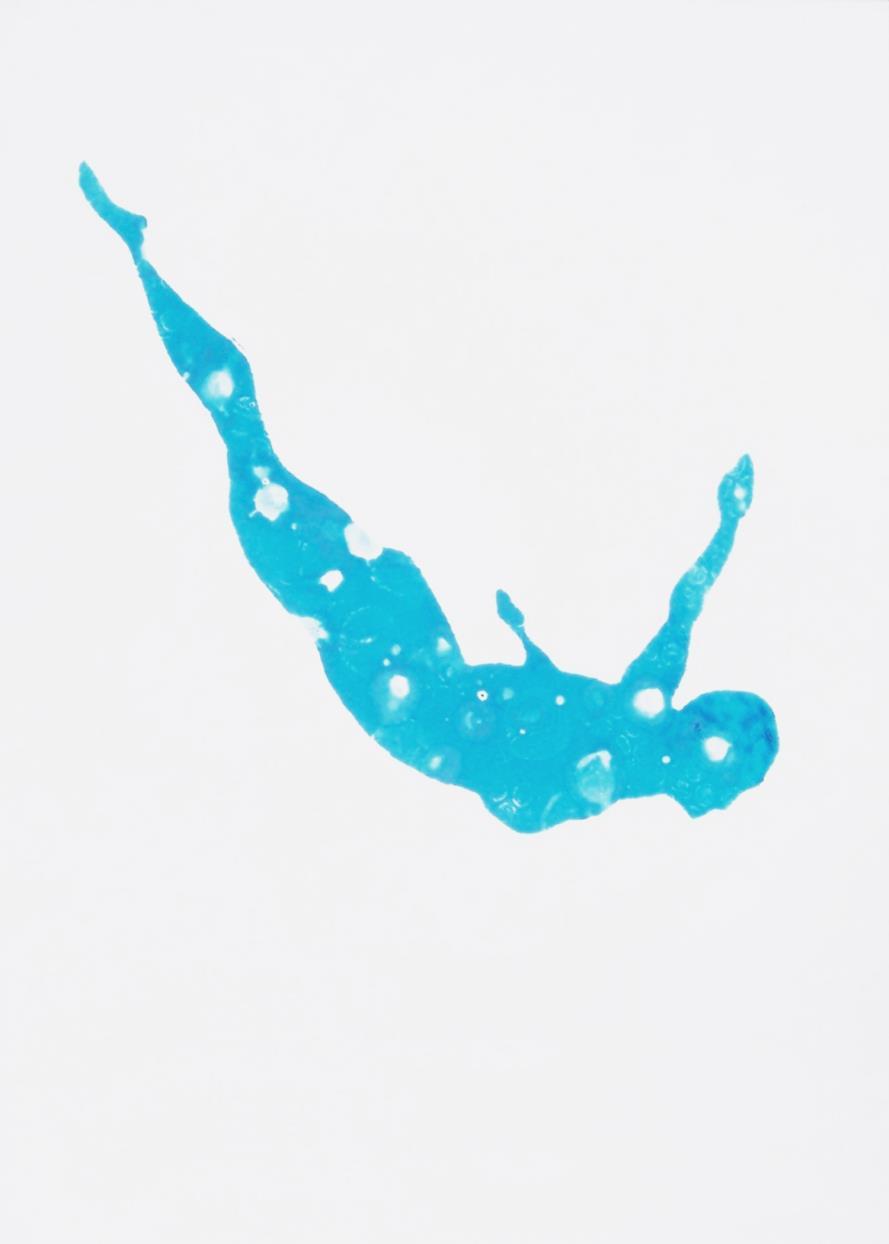
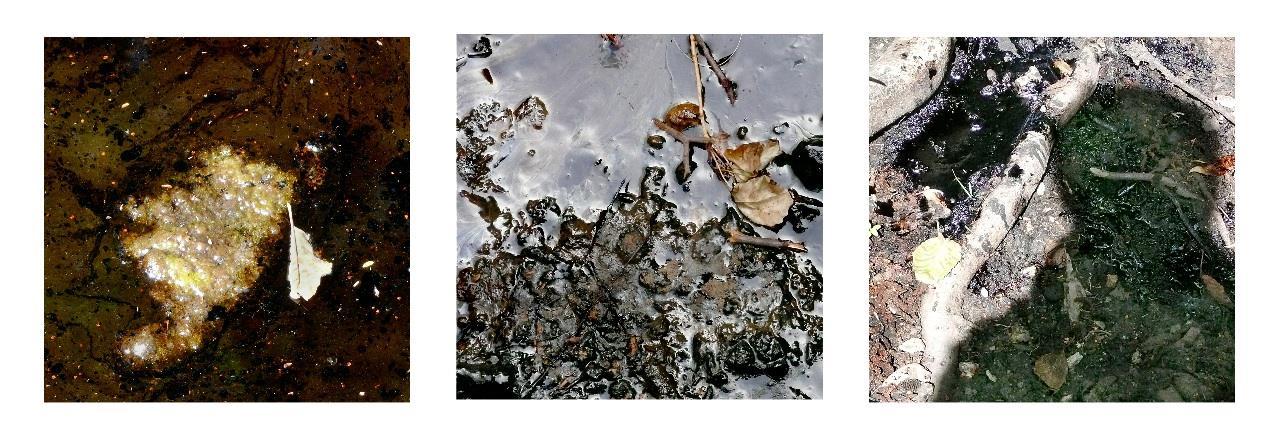
Digital Photos on Japanese Metal Paper 3 Panels at 8" h x 8" w each
My artwork whether expressed visually or in community endeavors serves to witness and honor the web of incredible relationships, energies and core elements that connect us to one another and ultimately sustain our very lives. The work always involves an ongoing exchange of bringing to the surface what was interior and often invisible and bringing what was surface to the interior experience. These poetic photos were taken on a cloudy spring day at the La Brea Tar Pits Park in the shadows of the Los Angeles County Art Museum. Which adds a layer of gentle visual irony as viewers discover the rich array of colors and forms that emerged as water, oil, tar and light quietly intermixed. The resultant imagery invites us to summon our own inner resolve, strength and compassion to re-envision new forms for our relationship to our dear planet and its most precious resource, water.
Sandra MuellerDigital Photos on Japanese Metal Paper 3 Panels at 8" h x 8" w each
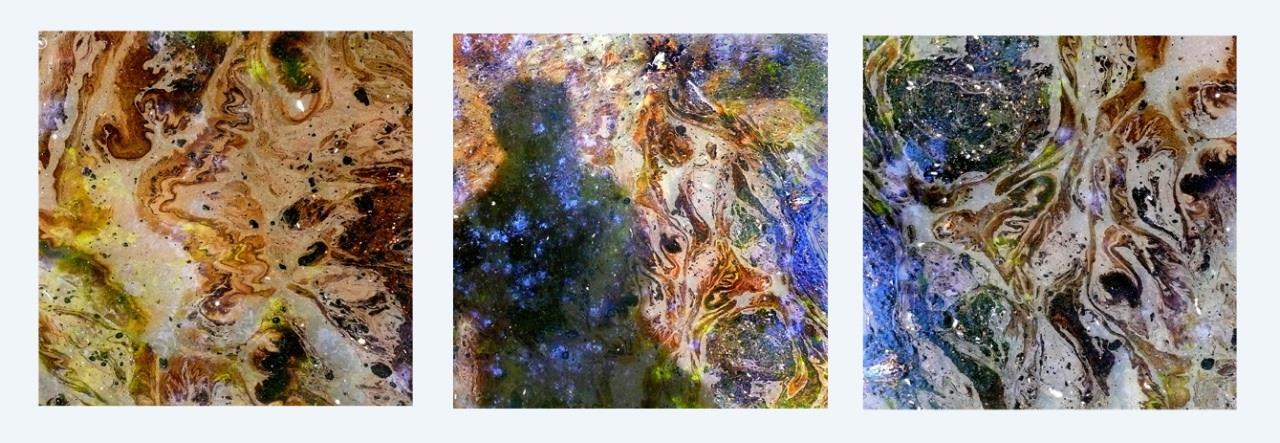 Sandra Mueller
Sandra Mueller
Plates with Image Transfers
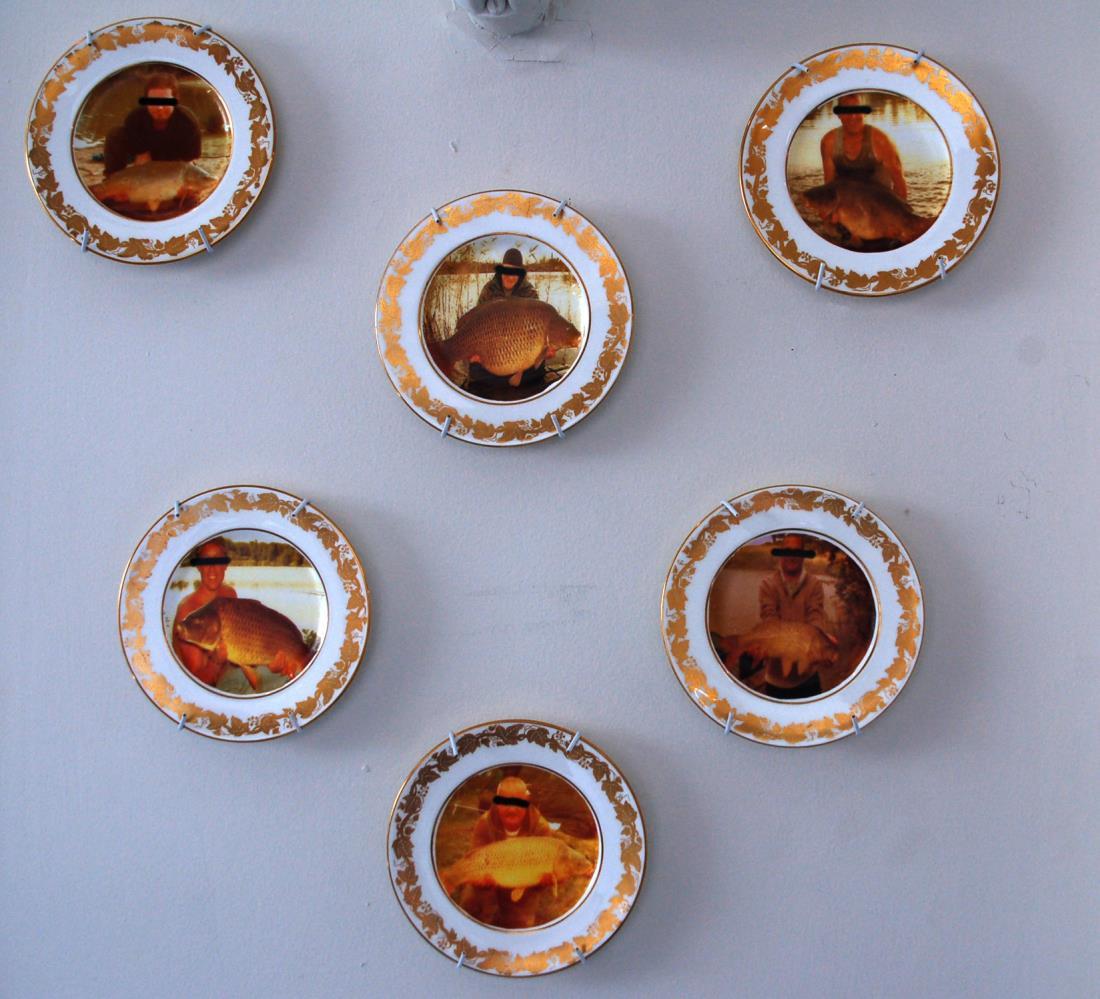
Six plates, 5" dia. Each
Since the early 1800’s Japanese culture has viewed the carp/koi is a symbol of Virility, much the way I view the images of fishermen with their catch, mugging for the camera. It is with this same naïve bravado that these veracious and aggressive fish were introduced to our waterways. How arrogant of man to think that they could manipulate the environment without consequence. To me ecology is about balance, man’s meddling puts nature at risk. Using recycled dishes found in second hand stores and appropriated images from social networking profiles; I hope to bring attention to the issue of the invasive Asian Carp, which currently threaten the Great Lakes, 20% of the world’s fresh water supply. As this invasive species makes it way up the rivers from fisheries in the south there is concern for the natural species that live there, the fragile ecosystems, people who use the water ways for sport and recreation and the economy. Humans made this mess and now we must try to stop it. What I infer in my piece is “Okay big man you think you are so great? Carpe Carp”
Oil and Encaustic on Panel 21" h x 15" w x 2" d
My works are abstract renderings inspired by the fact that the adult human body is between 55 and 60% water, (blood contains almost 70% water) while the surface of planet earth is covered by 70% ocean water. Many preindustrial cultures around the globe acknowledged the interconnected relationship between humankind and mother earth. Our similar water ratio offers an important consideration: that the condition and ultimate fate of the earth and all of humankind are one and the same.
There are many of us who believe we are on the cusp of a paradigm shift that advocates a return to holistic health and healing on a personal, communal and global scale. The micro/macro energetic similarities between human and global anatomy are all at once metaphorically poetic and scientific. While acknowledging Water as life sustaining Source I offer these paintings as universal shamanic meditations towards health and healing. Zero Point Field XI is an abstract rendering that speaks to the micro and macro relationships of water in the human body and the earth.

on Panel
Sacred Anatomy I is an abstract rendering of the human torso in motion. It aims to express the fluidity and movement of water within the energy field of the human form.

Recently, I’ve heard a lot of people in Northern California complaining about the awful weather alluding to the copious rain we’ve had in the past few months. Yet without cloudy and rainy weather our water sources would be depleted. After years of drought, we’re still lacking the water reserves vital to sustain humans, animals, and plants throughout the state. In my three works presented for Blue Planet, I look upwards: at clouds, water made vapor, that make life possible on this planet. In Dialogs Between Tree, Cloud, and Sky I explore the relationship between plants, sunshine, and water; in both Continents of Blue and Clouds Blossoming in Blue I explore the beauty of the sky environment that envelops the Earth. As they say: every cloud has a silver lining: the potential for rain that nourishes our planet.

My pieces are often textured and always made of pure beeswax. This ancient process of painting with this organic natural product is one of the main reasons that lured me to its use in creating artistic abstracts representing people, places, and purposes.
“Glacier” is part of a series created in 2006 that represented extreme environments of our world from the majestic purple mountains of the Rockies and China to the red deserts of Africa. In 2009, visiting the Alaskan glacier, I was amazed how grand and beautiful but how insignificant the measurement of humans.
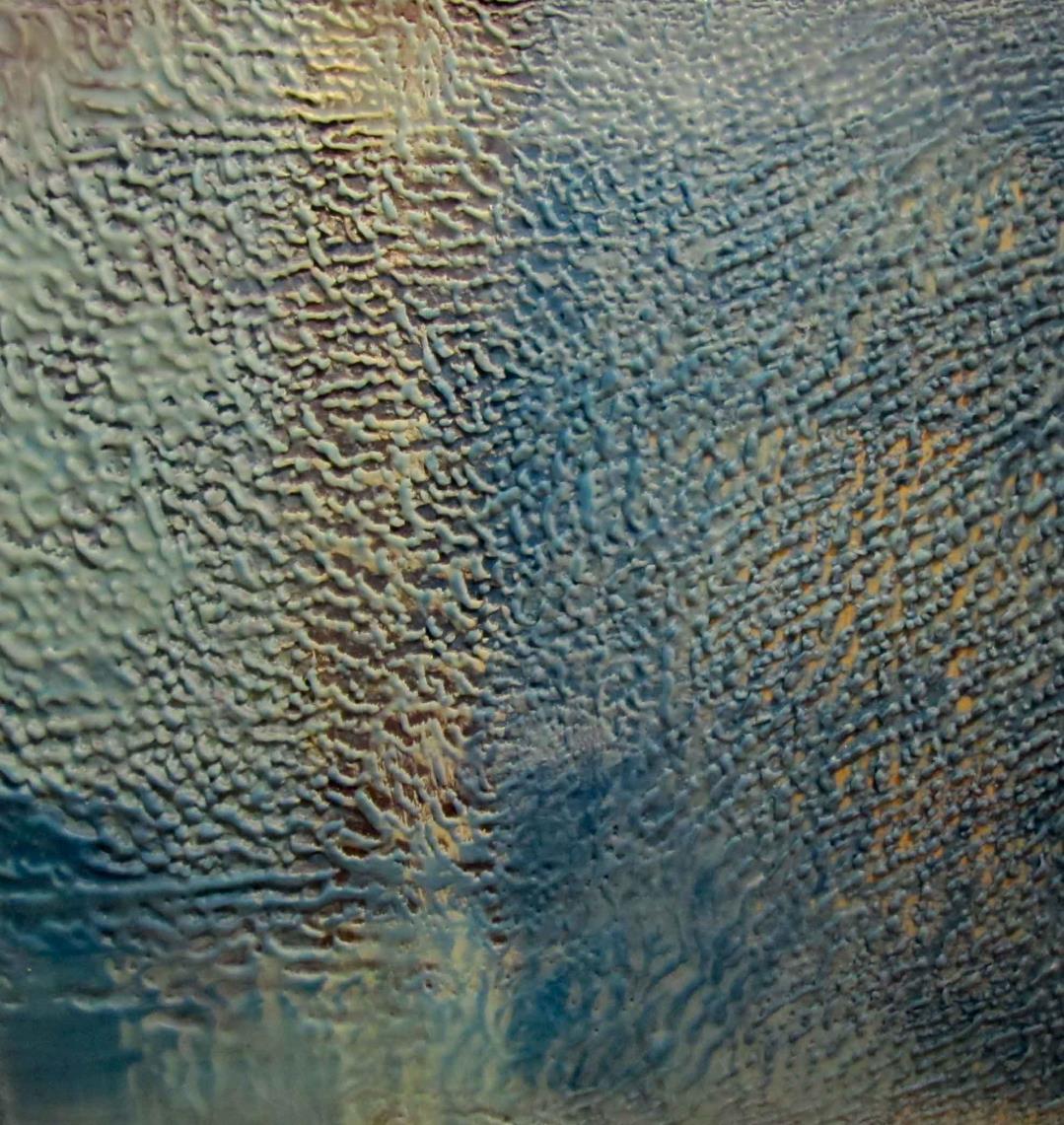 Encaustic (pigmented beeswax) 20" h x 20" w
Encaustic (pigmented beeswax) 20" h x 20" w
My work re-envisions water as power and energy - water fuels our life in every way.
Water is creation - all creation originates in water; Water is renewal - whatever blooms requires water to nourish it. Water is power and energy - water fuels our life in every way. This image, Counterpoise, re-envisions the power and energy of water.
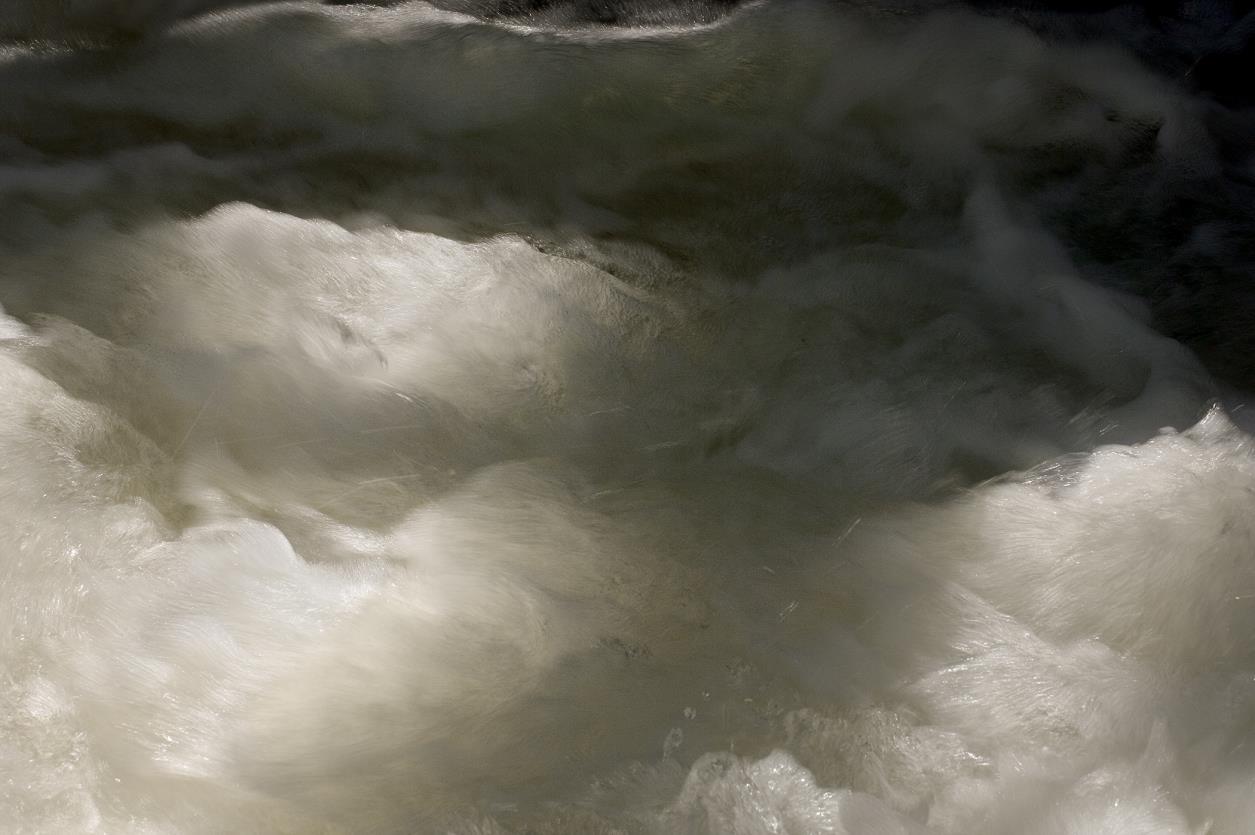 Inkjet Print (framed) 13 1/4"h x 20" w
Inkjet Print (framed) 13 1/4"h x 20" w
Indigenous peoples refer to North America as Turtle Island. It is with this legend I grew up seeing turtles as special and a cherished symbol of the planet earth. I believed as the ancient ones did that turtles have inner knowledge and wisdom. They remind us that all we need is provided by Mother Earth. That She will protect and nourish us, as long as we do the same for her. For this to happen, we must heighten our sensibilities. We must see the connection to all things. Just as the turtle cannot separate itself from its shell, neither can we separate ourselves from what we do to the earth.

Increased incidence of climate-related disasters, extreme temperatue, and melting glaciers has reduced the debate about global warming. However despite the obvious changes, many perisist in their disbelief that global climate change is real.
The figurres in thie piece represent the struggle of communications, understanding and disagreement on this issue. Despite our expansive solical technologies and wide means of media and communication, there is a “disconnect” amoung us that prevents us from saving that which should be valued most, life.
Furthermore, I am interested in the tragic irony of human-driven climate change. In this piece I explore human’s relationship with water, which is the source of life as well as a force that can bring destruction. The idea of being destroyed by an element that is essential to our survival is the biggest irony of this pehnomenon known as Global Warming.
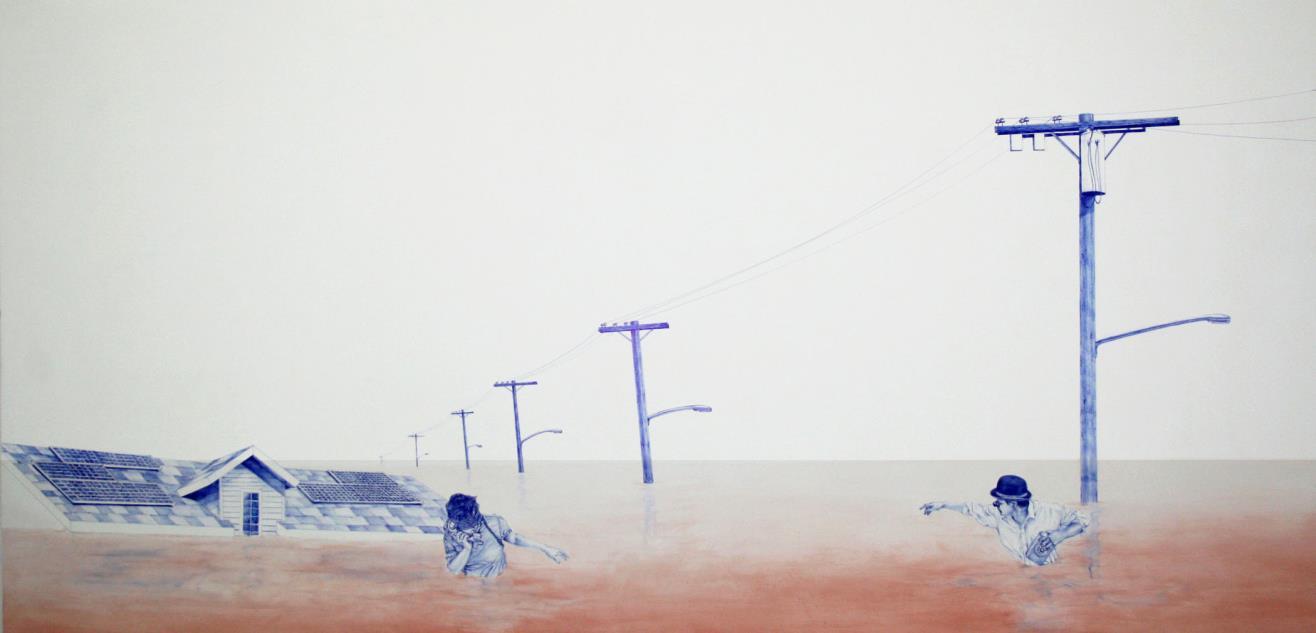
Increased incidence of climate-related disasters, extreme temperatures, and melting glaciers has demonstrated the tangile impacts of climate change and global warming. One result of melting glaciers, especially for coastal regions and island nations, is rising sea levels, flooding and excessive hurricanes. “High Hopes” depicts a world where survival requires adaptation to living in and around unpredictable water levels. In this piece, I hypothesize about conundrums that humans may face in a world of extreme landscapes. Specifically, I am interested in how – or even why – we might struggle to preserve other forms of life, what resources we would rely on, and what desires would drive us. The figure here looks to lifeless lumber (as a telephone pole) to plant his salvaged tree. What ways will we repurpose death (or dead things) to preserve life? The ironic yet most logical place to find safety for life is by finding refuge on a dead tree.

As the time passes by, I crave to break free from concrete jungles, bathtubs, ceramic tiles and windowpanes. Away from urban alienation, rejoining hands to make paper boats with my fellow playmates. I rush back, barefoot, far down memory lane to float my paper boats in the first monsoon rain. I smell the soil and hold tight the part of the fallen sky in my small palm and narrow throat as much as I can. The work emerges from un urge to reconnect to the nature/each other, and paraphrases my childhood memories spent in my home country India, where life still depends on the Monsoon rains. By reverting to the past images fed by the memories, the work comments upon the man made environmental catastrophe. In the work, the short video depicts creative interplay of floating boats in the bathtub made out of recycled paper. It depicts the continuous running water till it drains out completely leaving the boats laying still on the bathtub surface. The multilayered paper boats are a positive signifier, and comments upon the present state of disconnect between man and nature and how we do ingeniously use water in our culture.
 Monsoon
Video Installation 72" h x 48" w x 12" d (floor)
Monsoon
Video Installation 72" h x 48" w x 12" d (floor)
In Unwater, I chose to address the issue of water by showing the effect of its absence. The work takes its name from the term coined by poet Gregory Corso, in his poem “Sun.” Unwater shows how global warming is parching our land and turning parts of our planet into desert. The absence of fresh water has enormous consequences, not only for agriculture, but also for bio-diversity on the planet. Water, or lack of it, will determine our future.
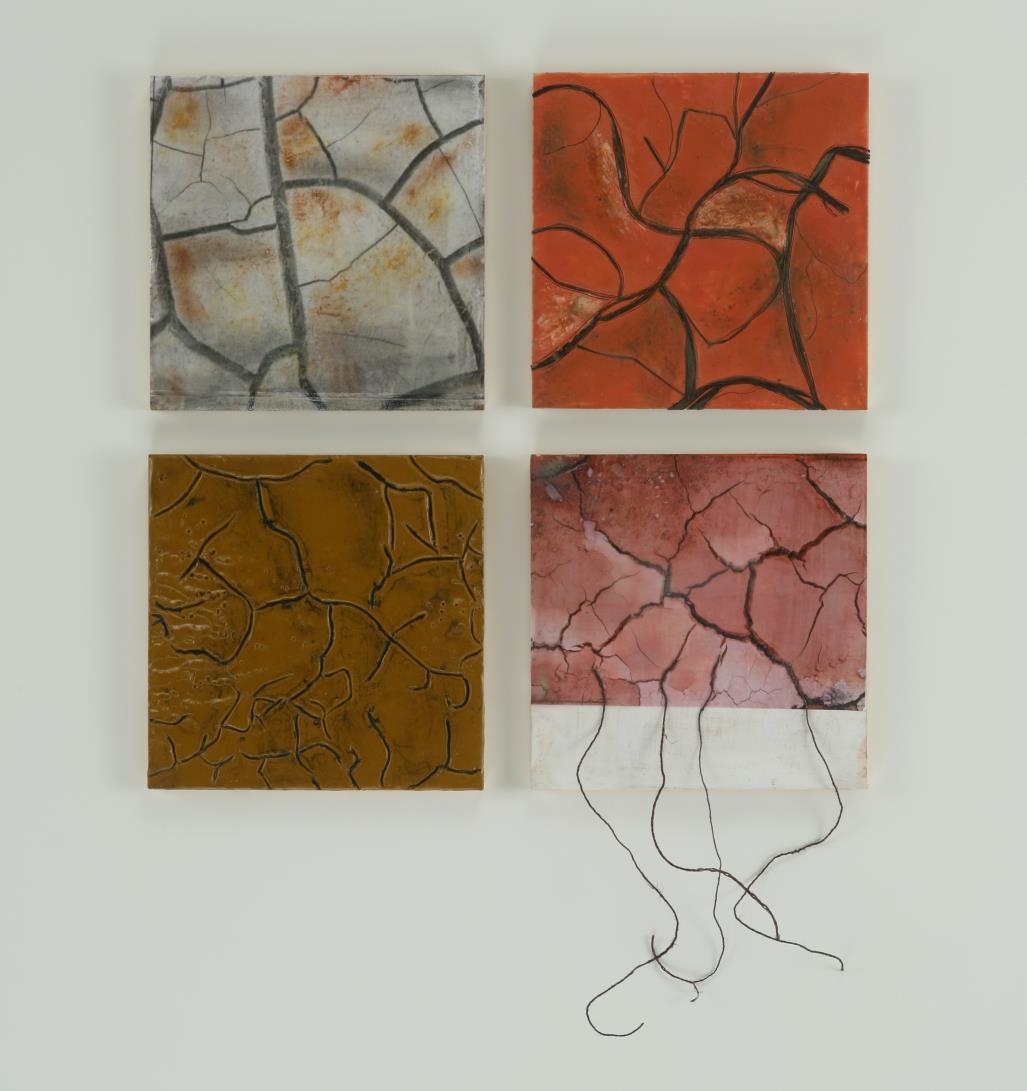
The piece Silent Spring, takes its name from the book written in 1962 by marine biologist Rachel Carson. It was the classic that launched the environmental movement and spurred revolutionary changes in the laws effecting our air, land and water. My piece illustrates the alarming evidence of the damage caused by the widespread use of DDT and other long-lasting agricultural pesticides. Just as Carson’s scientific studies brought these issues to the public’s attention for the first time, Eco-Art can highlight similar concerns for our day.

This work is a comment about our oceans and its animal life. The book originally titled "Living fishes of the World" is altered by removing everything from the books images of fishes except their outline and some "life" supports. I am convinced that our planets oceans are in danger and the fragile balances that make life sustainable are in jeopardy. The open book has on its left the table of contents listing what is illustrated, the altered pages on the right are only remnants of what should be there.

16" h x 6' w x 8" d Mixed Media Installation
Frogs that I fashion from reclaimed remnants have three hind legs, missing front limbs, parasites in their abdomen and disfigured faces. These mutated frogs have become the barometer of the toxins in our natural world. By displaying the mutated frogs in familiar soda bottles, I aim to direct our attention to the causality of our toxic habits to our environment and animals that cohabit our planet.
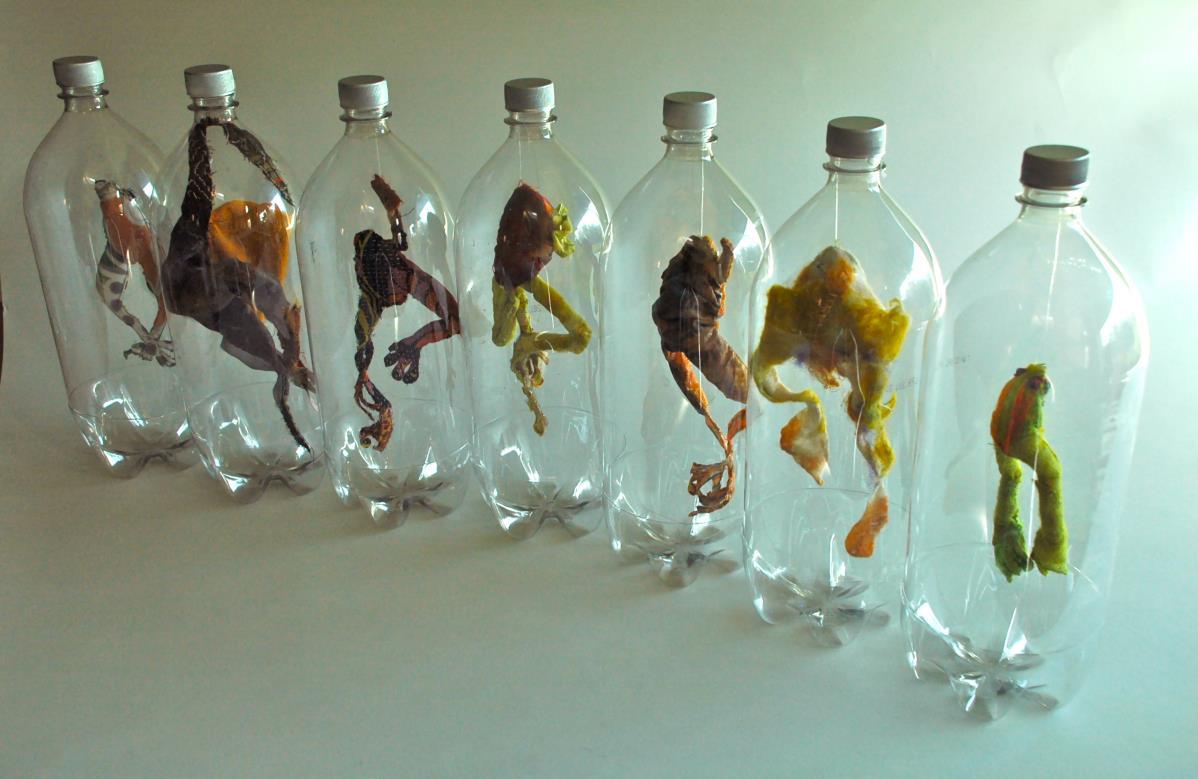
Out of 50 billion plastic bottles that we discard yearly, only 25% are recycled. The rest feeds and forms the giant Gyre Trash Island in the Pacific Ocean. While we blindly consume modern day conveniences, frogs from many parts of the worlds are showing undeniable effects of our toxic habits, deformities caused by chemical run offs and climate changes.
These renditions of frogs in mutilated forms are homage to the suffering of these frogs and all the other fragile creatures paying the price for our self-centered lifestyle. And it’s a study of how alike we all are when the symmetry of health is taken away.
Jennifer Kim SohnAs I began to explore the marine growth on the floats and boats of the San Francisco houseboat harbor where I live, I discovered a huge and splendid ecology of invertebrates, including the Pacific Mussel capable of siphoning three quarts of seawater an hour, the Acorn Barnacle with its delicate feathery cirripedia and the crab munching Giant Sea Anemone. I decided to take the artist’s job of making things visible very literally, especially since so many of these creatures are so tiny. As an act of honoring these little acknowledged but essential members of our marine ecology, I have taken advantage of the sumptuousness of the marvelous crumpled velvets, shimmering taffetas and fake furs of every description now available (and recycled wherever possible) to bring these astounding creatures to larger-than-life in all their unusual beauty and uniqueness. I consider these pieces Eco-Art educational tools designed to alter our awareness and perspective of these common but overlooked fellow beings.
 Fabric
36" h x 40" w x 40" d
Fabric
36" h x 40" w x 40" d
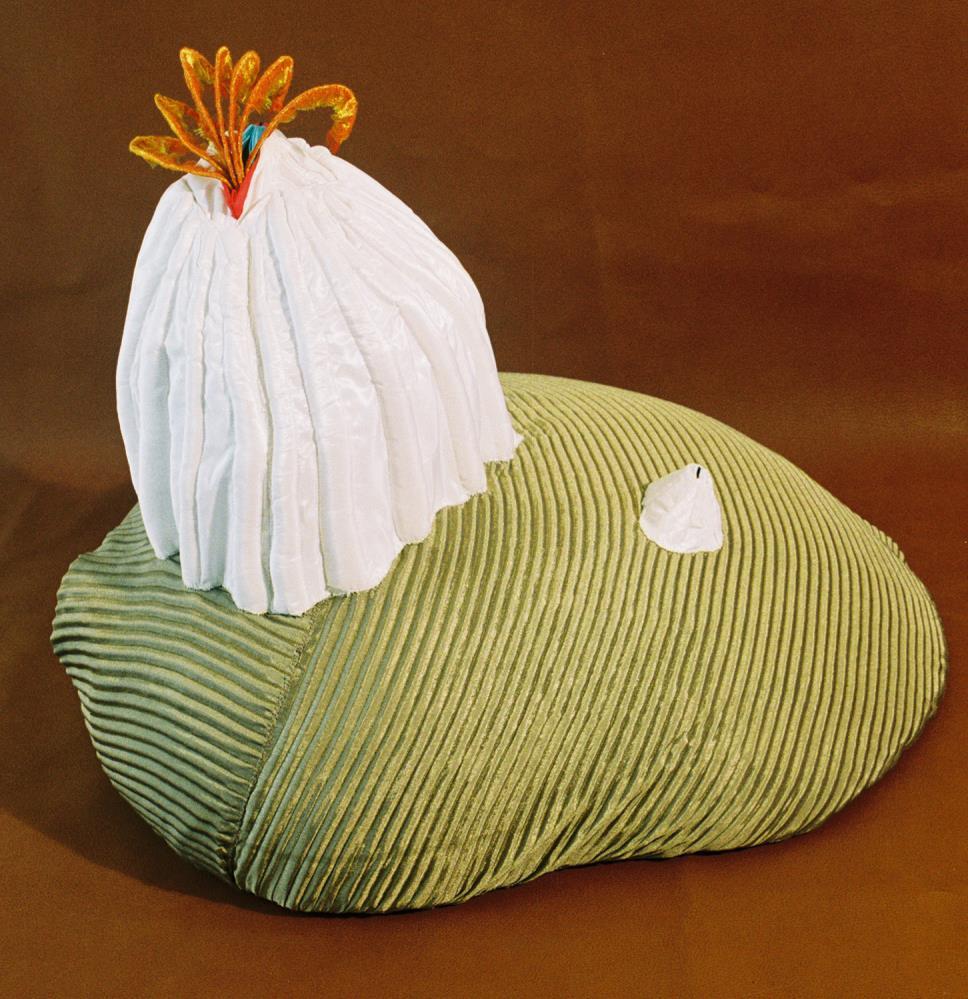 Acorn Barnacle
Fabric
17" h x 18" w x 21" d
Acorn Barnacle
Fabric
17" h x 18" w x 21" d
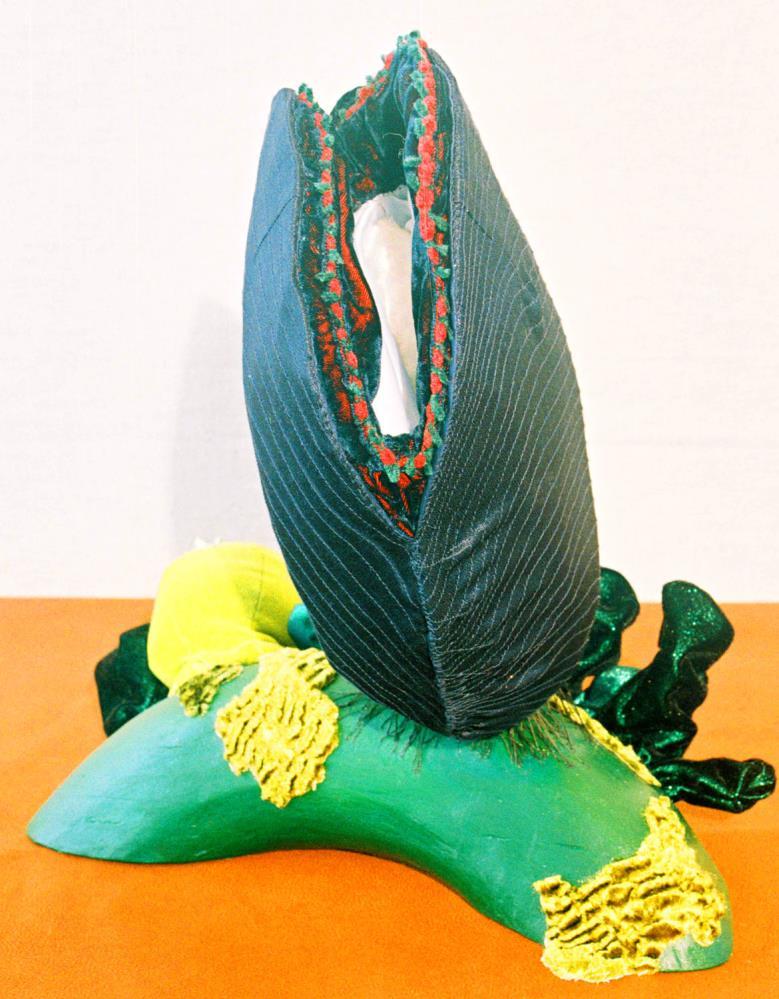 Pacific Mussel
Fabric and Wood 17" h x 16" w x 10" d
Pacific Mussel
Fabric and Wood 17" h x 16" w x 10" d
Installation 96" h x 56" w x 24" d

Arroyo Seco Watershed and Surrounding Area is a conceptual installation consisting of a series of over 350 tiny photographs taken in and around the Arroyo Seco watershed during heavy rains; the Arroyo Seco and the Los Angeles River were inundated at the time and the Devil’s Gate Dam spillover was opened to handle a torrential flow of water through typically dry channels.
The photos are attached to a hanging shower curtain, associating the watershed with the intimate experience of taking a shower. They are juxtaposed with documentation about this water supply, prompting questions about water rights in Southern California. (Who “owns” this local water? Who uses it at what price and to what end?) The scale and number of photographs, including repetitions, and their positioning on a shower curtain also act to challenge the status of European picturesque landscape and the power relation it embodies: Where does a viewer “stand” in relation to the landscape? – as the master or viewer of the land or the “owner” of the water? Perhaps instead the viewer could imagine a collaborative partnership in a sustainable ecosystem.
“Emerald Vista” addresses the immense yet fragile power that water has in our lives. In this work I have surrounded a small area of geometrical forms (mankind’s constructive/intellectual abilities) with a frenzy of powerful fluid imagery. Next to the geometrical forms and tucked under what might be interpreted as tidal waves of healthy, fertile energy/imagery, is what appears to be a calming horizon line. The viewer’s eye, after bouncing around the swirl of circular motion, will naturally search for respite in this space. A moment’s pause in contemplation of color usage, though, will have the viewer wondering how calm that horizon really is. Do the gray color tones represent a calm ocean vista on a cloudy day, or more alarmingly, do they signify instead a seascape of polluted waters. With this uncertainty in mind the viewer becomes participant in the dialogue of water conservation.

Antique Canvas Wardrobe, Glass Bottles and Paper 71 1/4" h x 50" w x 30" d
Inspired by a deep love and appreciation for the various forms and uses of water, The Last Apothecary seeks to invoke feelings of curiosity and discovery for viewers as they stand before the last remaining drops of water on Earth. By rebottling water in small and specific containers according to social, cultural, geographical references and practical use, we experience the invaluable element in a tangible scarcity unfathomable today. Before pharmacists, apothecaries were the trusted dispensers of healing formulas in a community. Conjuring up primordial associations of craft and recognition for the intrinsic worth of particular elements, this installation suggests our continued reliance on the intuitive action of such individuals to preserve and ethically utilize our most precious resources. As Eco-Art must, The Last Apothecary illuminates personal and community values surrounding our consumption and treatment of water, ultimately seeking to ignite increased appreciation and action for the resource. We are all the last apothecaries.
 Jillian Van Ness
Jillian Van Ness
Advancement (or, more accurately, the struggle to advance), frustration, and repetition are the recurring themes of my new work. In the visual culture of the 21st century, we are bombarded by repeated images until they become a pattern of visual noise. By using a computer, I repeat images in order to make an appealing visual pattern, which has an underlying, often darker, meaning. Struggling to advance, and getting nowhere, leads to frustration. The frustration that I deal with also comes from situations of great danger and increasing impotence (the “war” on terror for example), and how people react or don’t react to such situations (including the environmental crisis or economic disaster). I observe that patriotism is often linked to mindless consumerism, and that citizens and politicians alike, often behave as if they see no evil, hear no evil, or speak no evil. Images of fear or frustration that I stitch together visually often result in tapestry-like, spatially flattened, compositions. This references pre-Renaissance and/or non-western methods of pictorial organization, for storytelling purposes, that were used in textiles, ceramics, and architectural decoration.
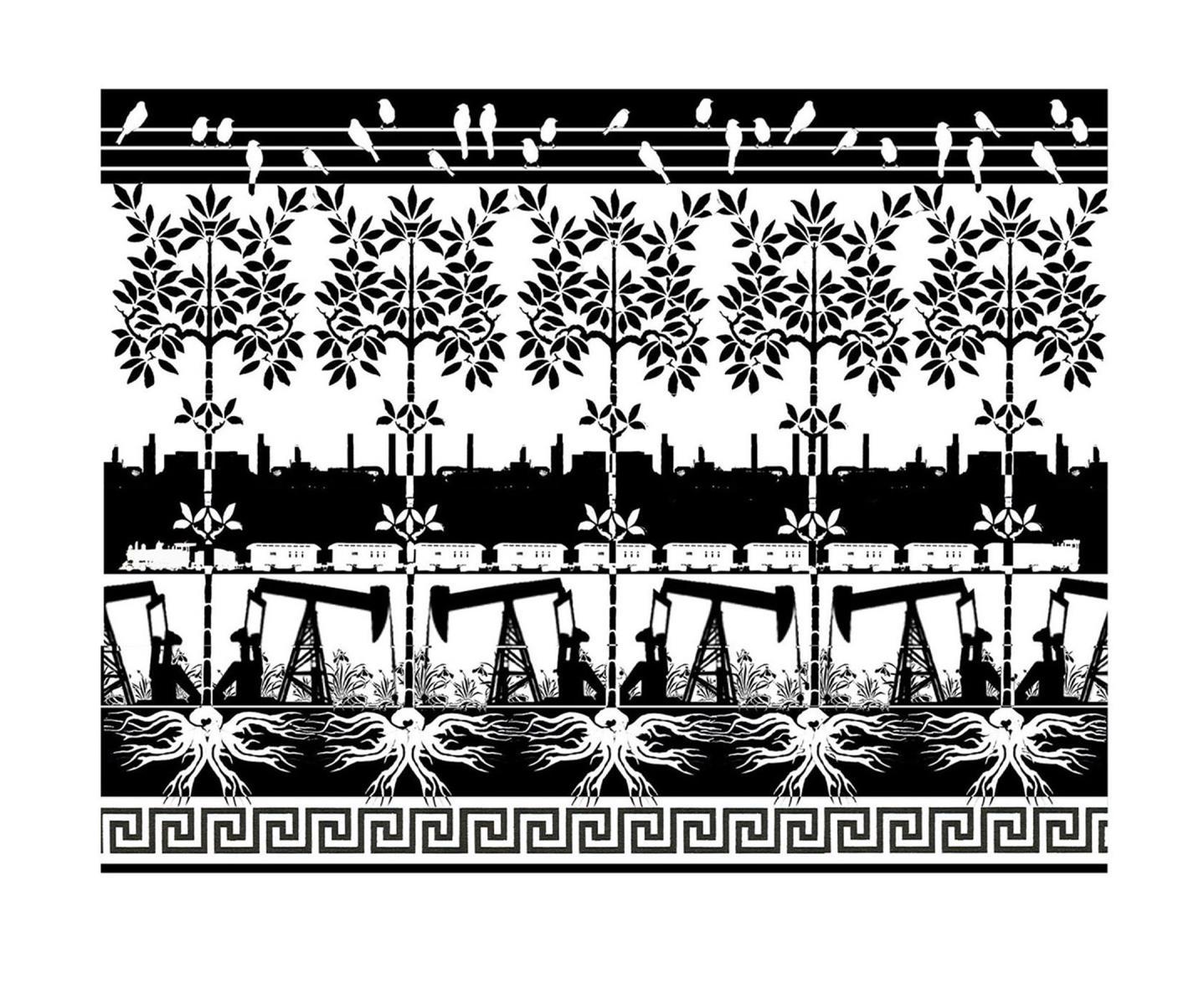
This painting represents the vulnerability of translucent waters that are protected, at least temporarily by an incomplete barrier of rocks. The rocks are symbolic of the efforts of human intervention and serve as guardians.
